Text
Hot Stone Massage
Are you seeking relief from muscle tension or looking to unwind? Learn how a hot stone massage can deliver deep muscle relaxation and stress reduction using heated stones and strategic massage techniques. This article takes you through the benefits, processes, and safety of hot stone massages, preparing you for a serene wellness experience.
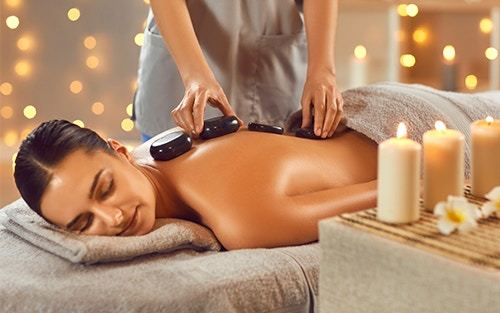
Key Takeaways
Hot stone massage is a traditional therapy that promotes relaxation and pain relief. It uses heated basalt stones strategically placed and moved on the body alongside Swedish and deep tissue massage techniques.
The practice delivers various health benefits for both body and mind, including relief from muscle tension and chronic pain, improved circulation, stress reduction, and enhancements in sleep quality and mental well-being.
While effective for many, hot stone massage requires careful temperature control and may not be suitable for people with certain health conditions; it is essential to communicate with a trained therapist to ensure safety and maximize therapeutic benefits.
Embracing Warmth: Discovering Hot Stone Therapy
Hot stone massage has ancient roots in Asia, with the Chinese, Hawaiians, and Native Americans using heated stones for pain relief and relaxation long before it became a spa trend. This therapy was modernized in 1993 by Mary Nelson, who integrated hot stones into contemporary therapy as LaStone Therapy, making it a global phenomenon. Perhaps it’s the allure of ancient wisdom or the soothing promise of warm stones, but hot stone massages are a sought-after therapy today.
You may be wondering what exactly transpires during a hot stone massage. The therapy involves the use of heated basalt river rocks, which are known for their excellent heat retention properties. The stones are heated in water between 110°F and 130°F using a professional massage stone heater, ensuring a safe temperature that’s conducive to deep relaxation.
The Essentials Of Hot Stone Massage
The potency of hot stone massage is attributed to the unique blend of heat, pressure, and the strategic positioning of the stones. The heated stones are placed on various points of the body, targeting areas of muscle tension to promote relaxation. The result? An immediate sense of warmth and tranquility seeps into your body, melting away stress and tension.
However, the therapy involves more than just setting stones on the body. The massage therapist also uses the heated stones as an extension of their hands, gliding them along your body using traditional Swedish massage techniques. The heat from the stones penetrates deep into the muscles, enhancing the effects of the massage and promoting deep relaxation.
The Art Of Stone Placement

the spine
the abdomen
the chest
the face
the feet
the forehead
the palms
the toes
any other area that requires therapeutic attention
This meticulous placement of stones helps address specific problem areas, providing targeted relief from discomfort and pain.
Yet, the therapy is not solely about the location of the stones but also their arrangement. The stones are often arranged in specific patterns or sequences, creating a rhythm that works in harmony with the body’s natural energy flow. This thoughtful arrangement of stones enhances the overall therapeutic effect of the massage, delivering a deeply relaxing and therapeutic experience.
Balancing Heat With Technique
While one might assume that applying hot stones is the crux of this therapy, the truth lies in the harmonious fusion of heat and technique that truly characterizes a hot stone massage. Incorporating traditional massage techniques, Swedish massage techniques such as:
long strokes
kneading
rolling
tapping
circular movements
The use of heated stones enhances deep tissue massage techniques, promoting deeper muscle relaxation. Massage therapists with hot stones utilize specific movements, such as vibrations, to address client-specific needs during the massage.
Safety is also a key element of this therapy. Stones are heated to approximately 105-110 degrees for client safety and comfort. In fact, if stones are too hot for the therapist to handle, they are too hot for the client application, ensuring a safe temperature is always maintained. This balance of heat and technique ensures that each hot stone massage session is not only effective but also safe and comfortable.
The Healing Touch: Benefits of Hot Stone Massage
Hot stone massage transcends the boundaries of a mere luxurious spa treatment; it’s a holistic therapy that delivers a multitude of health advantages. Some of the benefits of hot stone massage include:
Relieving chronic pain and muscle tension
Promoting relaxation and reducing stress
Improving sleep quality
Increasing circulation and lymphatic drainage
Boosting the immune system
Alleviating symptoms of anxiety and depression
Hot stone massage is a comprehensive wellness treatment that addresses physical and mental well-being.
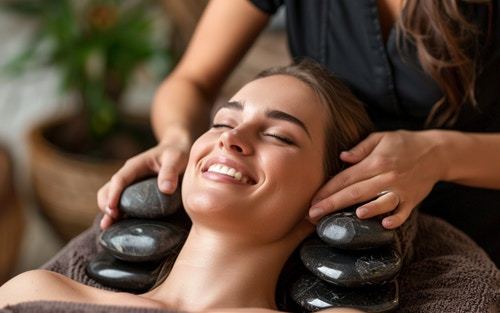
The profound effects of hot stone massage are achieved through the unique synergy of heat, pressure, and strategic stone placement. The benefits of hot stone massage include:
Increased blood flow to targeted areas, aiding in the healing process
Promotion of deep relaxation
Reduction of muscle spasms
Improved flexibility and range of motion
Hot stone massage benefits make this therapy a powerful tool for holistic health improvement.
Alleviating Chronic Pain And Muscle Soreness
For those among the millions grappling with chronic or muscle pain, hot stone massage might be the relief and therapy type you’ve been seeking. The application of heat and pressure in a hot stone massage releases muscle tension, reduces spasms, and provides relief from stiffness. This can be particularly beneficial for people with musculoskeletal injuries or chronic pain conditions, as the massage can provide remarkable pain relief and promote enhanced flexibility and ease of movement.
Moreover, the warmth from the stones induces a soothing effect that helps reduce stress and anxiety, fostering a sense of deep relaxation. This mind-body connection is a crucial aspect of pain management, as stress and tension can often exacerbate physical pain. Thus, hot stone massage can pave the way for long-lasting relief from chronic pain and muscle soreness by promoting relaxation and alleviating muscle tension.
Boosting Mental Well-Being
The benefits of hot stone massage extend beyond the physical; they also cater to mental well-being. A hot stone massage can have calming and centering effects, which may help alleviate symptoms of anxiety and depression. This can contribute to enhanced emotional well-being. The relaxation and stress relief from hot stone massage is enhanced by decreasing the production of cortisol and increasing serotonin and dopamine levels, leading to a noticeable boost in mood and overall mental well-being.
Further, studies show that hot stone massage can relieve stress and pain and improve sleep quality, potentially through a combination of relaxation and endorphin release. By helping you manage stress, alleviate anxiety, and achieve better sleep, hot stone massage can significantly enhance your mental health and overall quality of life.
Enhancing Sleep Patterns
While sleep is an essential aspect of overall health, it remains a challenge for many. If you toss and turn at night, a hot stone massage could be the answer you’ve been looking for. The deep relaxation induced by hot stone massage can make it easier for individuals to fall asleep and enjoy more restorative sleep.
Regular hot stone massages can be particularly beneficial for individuals with insomnia or those who struggle to achieve deep sleep. These massages may help improve sleep quality and promote relaxation. The profound relaxation and stress relief from hot stone massage set the perfect stage for a good night’s sleep, helping you wake up refreshed and revitalized.
So, if you’re tired of counting sheep, maybe it’s time to try a hot stone massage and discover the difference it can make to your sleep patterns.
Integrating Hot and Cold Stones in Massage Therapy
Hot stone massage therapy enjoys widespread popularity, but there is an advanced technique that elevates this therapy—the incorporation of both hot and cold stones. Utilizing thermo-therapeutic techniques simultaneously loosens muscle tissues and reduces inflammation, offering significant benefits for individuals with conditions such as arthritis and exercise-induced muscle soreness.
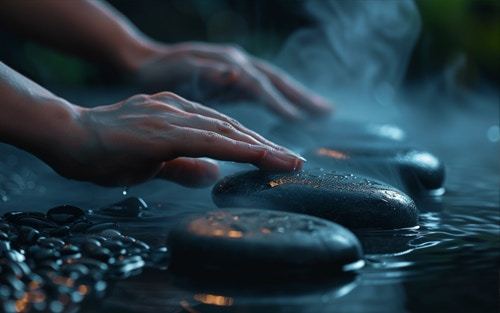
This integrative approach, known as contrast therapy, offers the best of both worlds, combining the soothing heat of hot stones with the invigorating coolness of cold stones. The result is a dynamic therapy that not only provides relief from pain and discomfort but also enhances overall well-being by promoting optimal body function.
The Contrast Therapy Approach
LaStone Therapy is a modern adaptation of hot stone massage that uses the principles of contrast therapy. Introduced by Mary Nelson in 1993, this therapy combines hot and cold stones to:
Enhance circulation
Stimulate the lymphatic system
Detoxify the body
Alleviate pain
Stimulate and invigorate the body
Refresh the mind.
The contrasting temperatures of hot and chilled stones uniquely affect the body. The warmth from hot stones acts as a vasodilator, dilating blood vessels that help loosen the muscles for deep massage effects without discomfort. On the other hand, cold stones act as a vasoconstrictor, driving blood toward the core of the body, thereby nourishing and protecting internal organs. This balance of hot and cold not only boosts physical well-being but also promotes mental clarity and rejuvenation.
Customizing Treatments For Individual Needs
A significant strength of hot stone therapy lies in its flexible and adaptable nature. Hot stone massage treatments can be customized based on individual client needs, targeting specific injuries and pain points. Whether it’s neck tension from long hours at the computer or lower back pain from physical exertion, a skilled massage therapist can adjust the therapy to address your unique needs.
In fact, for clients with chronic conditions such as arthritis or inflammatory diseases, therapists adapt hot and cold stone massage therapy, using localized contrast therapy to provide long-lasting pain relief without adverse systemic effects. This personalization of the therapy makes hot stone massage a valuable tool in managing a wide range of health issues, enhancing overall wellness and quality of life.
Precautions and Considerations in Hot Stone Massage
Although hot stone massage is a potent therapeutic instrument, certain precautions and considerations must be taken to ensure a safe and beneficial experience. From ensuring safe temperatures to proper stone placement, several factors need to be taken into account.
Moreover, open communication with the therapist is crucial to ensure a safe and effective treatment. Any health conditions that could make the treatment hazardous should be disclosed beforehand. It’s also essential that the therapist has specific safety training for hot stone massage to decrease the risk and severity of potential injuries resulting from the treatment.
Who Should Avoid Hot Stone Massages?
While hot stone massages can be incredibly beneficial, they may not be suitable for everyone. Individuals with the following conditions should avoid hot stone massages:
Diabetes
Suppressed immune systems
Neuropathy
Osteoporosis
Clotting disorders
Anyone with a condition that prevents them from providing feedback on heat discomfort
Pregnant individuals should generally avoid very hot stone massages due to the potential effects of additional heat, though warm stones may be used with caution and medical consultation. Similarly, individuals with weakened skin integrity, such as recent cuts or abrasions, should avoid hot stone massages to prevent further injury. It’s always best to consult a healthcare professional before beginning any new therapy.
Ensuring Safe Temperatures
Ensuring safe temperatures is a crucial aspect of hot stone massage. Here are some guidelines to follow:
Stones are typically heated to 110 to 130 degrees Fahrenheit for therapeutic use.
A professional massage stone heater is used for precise temperature control.
A calibrated thermometer accurately gauges the temperature of the stones, ensuring they remain well under 140 degrees Fahrenheit.
By following these guidelines, you can ensure a safe and effective hot stone massage.
Moreover, if stones are accidentally overheated, a small bowl of cold water can be used for a quick cool down, allowing for safe use while waiting for the heater to adjust. Damp materials can transfer heat quickly. Therefore, they should be dry before placing a hot stone on them to prevent accidental burns. These precautions ensure that the therapy is not only effective but also safe and comfortable for the client.
Self-Care Through Massage: Incorporating Hot Stone Therapy
Integrating hot stone therapy into your self-care regimen can notably improve your overall wellness and relaxation. Whether you’re looking to alleviate chronic pain, reduce stress, or indulge in a luxurious spa treatment, hot stone therapy offers a holistic approach to wellness that goes beyond conventional massage treatments.
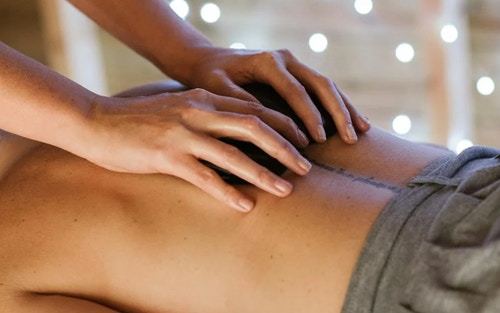
The frequency of hot stone massage treatments can be highly personalized, allowing you to book sessions that fit your lifestyle and preferences. Whether you choose to schedule your hot stone massages as part of ongoing therapy or as an occasional luxury, the therapy can be tailored to meet your unique personal needs and goals.
Making Time For Self-Care
In the hustle and bustle of today’s world, prioritizing self-care has never been more critical. Yet, it’s often the first thing to be sidelined when life gets busy. Regular self-care, including massage, is vital for maintaining mental and physical well-being. By embracing massage therapy as part of your self-care routine, you’re acknowledging the significance of dedicating time to yourself, a slight shift in mindset that can have profound effects on your overall well-being.
Incorporating at least one hot stone massage session monthly into your schedule can optimize self-care benefits. Massage enhances other self-care measures, such as fitness regimens, by easing muscle tension and boosting circulation. Regardless of how busy you are, making time for self-care is an investment in your health and happiness.
Finding The Right Massage Therapist
To ensure the finest hot stone therapy experience, selecting a qualified massage therapist is essential. Seasoned massage therapists with experience in hot stone therapy are likely to have a higher skill level, ensuring that you get the most out of your sessions.
Online reviews and testimonials are valuable resources for assessing a massage therapist’s reputation and quality of service. Remember, a good massage therapist is not just about skill and technique but also about communication, understanding your needs, and creating a comfortable and relaxing environment.
Hot Stone Massage Summary
In essence, hot stone massage is a versatile therapy that harnesses the power of heated stones to provide deep relaxation, relieve pain, boost mental well-being, and improve sleep patterns. Whether you’re dealing with chronic pain, struggling with stress and anxiety, or simply looking for a way to pamper yourself, hot stone massage offers a holistic approach to wellness that goes beyond traditional massage techniques. So why wait? Take the first step towards wellness and embrace the warmth of hot stone therapy today.
Hot Stone Frequently Asked Questions
These are common hot stone massage questions our Athens massage therapists are asked:
What Is A Hot Stone Massage Therapy?
A hot stone massage involves placing heated stones on certain parts of the body to provide heat therapy, reduce tension, and alleviate discomfort. This type of massage aims to help one relax and ease tense muscles throughout the body.
How To Do A Hot Stone Massage?
To do a hot stone massage, heat the stones to 138-145 degrees, apply oil, place stones on the recipient’s body, massage with the stones, and change them as needed. Then, repeat the process.
What Types Of Stones Are Used In Hot Stone Massage?
Basalt river rocks are commonly used in hot stone massages for their ability to retain heat, and they are heated using a professional massage stone heater.
What Are The Benefits Of Hot Stone Massage?
Hot stone massage can provide relief from chronic pain and muscle soreness, reduce stress and anxiety, improve sleep, and enhance mental well-being. Consider trying it to experience these benefits.
Can Hot Stone Massage Be Customized According To Individual Needs?
Yes, hot stone massage can be customized to address individual injuries and pain points, making it a versatile treatment option for clients.
Foot Palace Massage Spa Athens
196 Alps Rd Ste 31, Athens, GA30606
(706) 521-5290
0 notes
Text
What Is Aromatherapy Massage
What is aromatherapy massage? It’s a therapeutic session that harnesses the power of essential oils combined with massage techniques to relax your body and enhance your mental and emotional well-being. Through smooth strokes and carefully chosen scents, this type of massage aims to alleviate stress, improve circulation, and invoke a sense of balance. Ready to learn how it all works? Let’s dive into the essence of aromatherapy massage, its principles, benefits, and how to integrate it safely into your wellness routine.

Key Takeaways
Aromatherapy massage integrates essential oils with massage therapy to promote relaxation, stress relief, pain reduction, and improved blood flow, aiming to harmonize body, mind, and spirit.
Essential oils like lavender, peppermint, and eucalyptus are commonly used in aromatherapy massage for their various therapeutic properties, such as soothing effects for better sleep, muscle pain relief, and sinus congestion relief, respectively.
Safety in aromatherapy massage is paramount, with careful selection of essential and carrier oils to avoid skin irritation or allergic reactions, and special attention is required for vulnerable groups such as pregnant women, children, and individuals with pre-existing health conditions.
Unlocking the Essence of Aromatherapy Massage
Aromatherapy massage is more than just a rejuvenating body treatment; it’s a holistic experience designed to harmonize the body, mind, and spirit. An aromatherapy massage session combines the therapeutic benefits of essential oils with traditional massage therapy to create a synergistic healing experience. This promotes:
relaxation
stress relief
improved blood flow
pain reduction
This dual approach to wellness is not just a passing trend. The rising interest in aromatherapy massage is driven by an increased focus on health and well-being, compounded by the busier and more stressful lives we lead.
Understanding Essential Oils In Aromatherapy
Fragrant essential oils, the heart and soul of aromatherapy, are concentrated plant extracts that capture the very essence of the plants from which they are derived. When used in aromatherapy, these oils interact with the skin and are inhaled, triggering pleasant emotions via the limbic system, a part of the brain that plays a crucial role in controlling:
mood
emotions
behavior
memory
Using high-quality, organic, therapeutic-grade oils during an aromatherapy massage is vital for ensuring safety and effectiveness. Crafting the perfect aromatherapy blend requires knowledge of each essential oil’s properties, creating combinations that enhance the desired therapeutic effect.
The Synergy Of Scent And Touch
Aromatherapy massage draws its magic from the powerful combination of scent and touch. The application of essential oils through massage can lead to:
Heightened relaxation
Enhanced sense of serenity
Deep relaxation
Reduced muscle spasms
Improved immune system function
Moreover, inhaling essential oils during a massage can immediately calm the limbic system, which is responsible for regulating emotions. This synergistic effect offers a non-pharmacological approach to emotional well-being, reducing psychological distress.
The Anatomy of an Aromatherapy Massage Session

Each aromatherapy massage session is meticulously designed to offer an immersive sensory experience tailored to your individual needs. It begins with a consultation, where the therapist discusses your medical history and personal needs. This information informs the choice of essential oil, which is then used to enhance the massage therapy experience.
Then, the therapist ensures the room has appropriate lighting, temperature, and ambiance and that the massage oil is warmed to create a conducive environment for relaxation. The therapist employs a series of techniques, such as:
Effleurage
Petrissage
Friction
Feathering
These techniques enhance the therapeutic benefits and relaxation provided by Swedish massage.
The therapist maintains constant, uninterrupted contact with your skin throughout the session to ensure your relaxation process is not disturbed.
Selecting The Appropriate Essential Oil
Selecting the right essential oil is pivotal in shaping your unique essential oil massage experience, also known as aromatherapy massage. The process begins with a consultation where the therapist learns about your work life, stress levels, diet, medications, and overall health to understand your mental, physical, and emotional well-being. Based on your individual goals, the therapist will guide you to an essential oil that can enhance the massage therapy experience, particularly for addressing stress, tension, anxiety, and pain.
The therapist chooses essential oils with inherent properties that align with your desired outcome, such as lavender for calmness or citrus for an energizing effect, and may also tailor selections to specific issues like sleep quality or emotional distress.
Techniques And Application
Various techniques are involved in the delicate process of applying essential oils during an aromatherapy massage. Aromatherapy massages include the following techniques:
Effleurage: to spread the oil and warm the muscles
Petrissage: to stimulate circulation and ease muscle tightness
Friction: to release tight muscles
Fanning: a specialized stroke to promote relaxation
Percussion: a specialized stroke to invigorate the muscles
Reflexology: a specialized technique to target specific pressure points
These oils are applied to the skin using long, smooth strokes in combination with specific massage techniques to maximize the therapeutic benefits.
Throughout the massage, essential oil molecules pass through the skin layers at a controlled rate, eventually reaching the bloodstream, aiding in healing and relaxation. The massage session often concludes with feathering, a technique that employs light fingertip strokes to help relax the body after more intense techniques.
The Top Essential Oils Used in Aromatherapy Massages
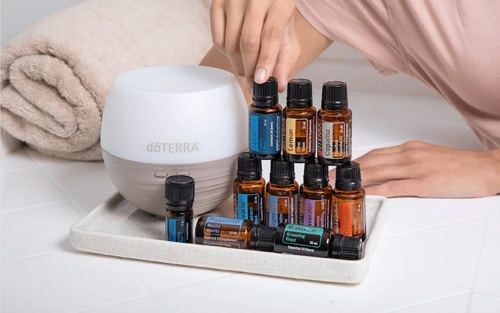
Although numerous essential oils exist, some have been particularly effective in aromatherapy massages. Lavender and peppermint are among the most popular essential oils used, providing various benefits, including sleep promotion and headache relief.
Healing aromatherapy blends often include a selection of essential oils that work together synergistically. For instance, blends combining:
Frankincense
White Spruce
Rosewood
Blue Tansy
They are known for their muscle tension relief and ability to balance the body and mind.
Lavender Oil: A Staple For Relaxation
Lavender oil, a staple in aromatherapy, is celebrated for its calming properties and sleep-promoting benefits. Its compounds, like linalool and linalyl acetate, possess sedative properties that aid in anxiety reduction and sleep promotion. Research indicates that lavender oil can improve sleep quality across various groups, including students, heart disease patients, and midlife women experiencing insomnia.
To maximize relaxation and encourage sleep, lavender oil can be used in various ways:
Applied topically to pulse points
Used as a pillow mist
Inhaled by diffusing
Utilized in bath salts and eye masks
Lavandula angustifolia, the most researched variety of lavender, is particularly recognized for its sleep-inducing benefits.
Peppermint Oil: Energizing And Pain-Relieving
Peppermint oil is another favorite in aromatherapy massages, known for its invigorating and pain-relieving properties. It provides:
A cooling sensation
Analgesic benefits
Antispasmodic benefits
Anti-inflammatory benefits to soothe sore muscles
Moreover, when combined with eucalyptus oil and ethanol, peppermint oil can effectively relax tense muscles during headaches, relieving discomfort.
Peppermint essential oil can soothe itchiness from insect bites, treat dandruff, and relieve sore or swollen feet.
Eucalyptus Oil: Clearing And Anti-Inflammatory
Eucalyptus oil, derived from the leaves of eucalyptus trees, is known for its clearing and anti-inflammatory benefits. This essential oil is rich in cineole, a potent anti-inflammatory and decongestant. Similar to tea tree oil, some benefits of eucalyptus oil include:
Clearing nasal congestion
Relieving cough and cold symptoms
Soothing sore muscles
Promoting relaxation and stress relief
Repelling insects
When used in an aromatherapy massage, a mix of eucalyptus oil and a carrier oil can specifically target sinus areas to ease congestion and reduce inflammation. Moreover, adding eucalyptus oil to bathwater enhances its decongesting and anti-inflammatory effects through steam inhalation.
The Healing Power of Aromatherapy Massage

The healing power of aromatherapy massage goes beyond mere relaxation. When absorbed through inhalation and topical application, essential oils can trigger mechanisms in the brain via the olfactory system, which communicates with the limbic system and hypothalamus to activate serotonin production, aiding in mood stabilization and preventing anxiety.
During the massage, essential oils can penetrate the top layers of the dermis to relieve muscle tension, enhancing the massage’s effectiveness. Aromatherapy massage has been shown to significantly reduce anxiety and lower stress levels while also providing a mood-boosting effect. This overall makes it a beneficial therapy for improving emotional well-being.
Soothing Musculoskeletal Systems
Soothing various musculoskeletal issues is one of the significant benefits of aromatherapy massage. Essential oils, like peppermint and ginger, provide a cooling or warming effect to help relieve sore muscle pain. Moreover, certain essential oils like Roman Chamomile, Tarragon, and Geranium are thought to ease discomfort associated with neuromuscular issues and neuralgia.
Furthermore, through topical application, these oils target specific areas for discomfort relief while nourishing and repairing the skin. Lastly, an aromatherapy massage improves circulation, enhancing the therapeutic benefits of essential oils.
Balancing Emotional Well-Being
Aromatherapy massage isn’t just a physical experience; it’s a powerful tool for balancing emotional well-being. The inhalation of essential oils during aromatherapy can stimulate the brain’s limbic system, resulting in emotional benefits such as:
mood enhancement
increased mental alertness
relaxation
stress relief
improved sleep
reduced anxiety and depression
This holistic, drug-free approach to emotional support is particularly valuable for those seeking natural methods of well-being enhancement.
Overall, aromatherapy massage fosters emotional healing and contributes to stress reduction and anxiety relief.
Integrating Aromatherapy Into Your Wellness Routine
Despite the luxury of professional aromatherapy massages, incorporating it into your wellness routine, lets you experience the benefits of aromatherapy daily. It starts with personalizing your aromatherapy experience to align with your personal goals and preferences. Choosing the right combination of essential and carrier oils is crucial for addressing your individual health needs and enhancing the therapeutic benefits.
Being proactive in selecting specific oils allows for a more resonant and effective aromatherapy treatment tailored to your personal needs and sensory preferences.
Frequency And Duration
The frequency and duration of your aromatherapy massages will depend on your individual health status and goals. Consulting with a massage therapist can provide personalized recommendations on the frequency of aromatherapy sessions needed to achieve optimal results.
However, for those seeking a general guideline without individualized advice, getting an aromatherapy massage every two weeks can help maintain health benefits and support long-term wellness.
At-Home Aromatherapy Practices
At-home aromatherapy practices can extend the benefits of your professional sessions. Here are some simple techniques to try:
Self-massage with essential oils can relieve various forms of pain and discomfort, from sore muscles to joint pain and fatigue.
Diffusing essential oils in your living space creates a relaxing home environment.
Adding oils to your bathwater can enhance the therapeutic effects of professional aromatherapy sessions.
Furthermore, releasing essential oil molecules through diffusion or direct skin application can improve your psychological state, promoting relaxation, mental clarity, and a sustained sense of well-being throughout the day.
Safety First: Understanding Risks and Precautions

Awareness of potential risks and safety precautions is crucial despite the numerous benefits of aromatherapy massage. Here are some important safety precautions to keep in mind:
Essential oils should be kept out of reach of children
Never use essential oils near an open flame due to their high combustibility
Essential oils should never be ingested as they are for external use only
To prevent allergic reactions, essential oils should be patch-tested on the skin with a carrier oil before widespread use.
Moreover, expired essential oils should be discarded as their effectiveness may diminish, and they could potentially cause adverse reactions.
Navigating Skin Sensitivity And Allergic Reactions
For a safe and enjoyable aromatherapy massage experience, managing skin sensitivity and allergic reactions is critical. Therapists should be aware of any contraindications, such as scent sensitivities, allergies, or health conditions that may affect the choice of essential oil or the appropriateness of aromatherapy. Essential oils can cause allergic contact dermatitis, irritant contact dermatitis, contact urticaria, and phototoxic reactions.
Essential oils should always be appropriately diluted with a carrier oil before topical application to prevent skin irritation and enhance their therapeutic effects.
Special Considerations For Vulnerable Groups
Vulnerable groups, such as pregnant women and cancer patients, should take special consideration when using essential oils. Pregnant and breastfeeding women should avoid the following essential oils, such as:
peppermint oil
star anise
fennel
oils in the lemon family
This is due to safety concerns during pregnancy and lactation.
It’s crucial to consult with a pediatrician before using essential oils on children and babies, as they are more sensitive to these oils. Likewise, clients with asthma or other respiratory conditions should consult healthcare professionals before using eucalyptus oil, as it can potentially trigger adverse reactions.
Personalizing Your Aromatherapy Experience
Personalizing the experience is key to maximizing the benefits of your aromatherapy massage. Understanding individual client needs is a critical aspect of personalizing the aromatherapy massage experience. You should work with your massage therapists to communicate personal needs, preferences, and desired outcomes from the aromatherapy session.
Identifying potential contraindications is crucial to ensuring the safety and effectiveness of a personalized aromatherapy massage.
Choosing Carrier Oils For Your Skin Type
Just like choosing the right essential oil, selecting the correct carrier oil for your skin type is crucial. Carrier oils facilitate smooth movements during the massage and prevent skin irritation. Sweet almond oil, for example, is excellent for individuals with dry skin as it retains moisture. Jojoba oil, due to its non-comedogenic characteristics, is ideal for those with acne-prone skin.
Meanwhile, with its light texture, grapeseed oil is also suitable for acne-prone skin as it doesn’t typically clog pores. For sensitive skin, fractionated coconut oil is a preferable carrier oil because it is lightweight and less likely to cause irritation.
Crafting Your Own Aromatherapy Blends
Creating your aromatherapy blends allows you to develop a personalized scent that suits your mood and needs. A balanced blend typically involves a top note that evaporates quickly, a middle note that comprises most of the aroma, and a base note that is heavier and lasts the longest.
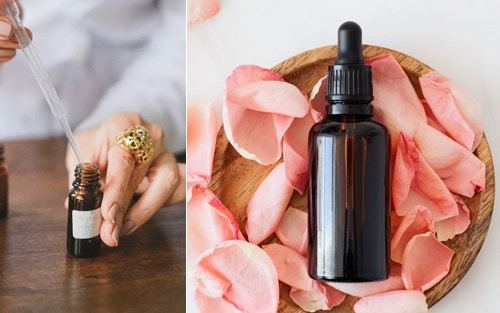
Start with a specific intention, such as relaxation, focus, or pain relief, to guide the selection of essential oils. And remember, keep detailed records of your blends, noting the specific oils, their proportions, and the effects, to replicate successful formulas and refine blends over time.
Aromatherapy Massage Summary
Aromatherapy massage is a holistic wellness practice that combines traditional massage techniques with the therapeutic benefits of essential oils. This unique approach promotes physical healing and emotional well-being, offering a natural, drug-free method for stress relief, pain reduction, and improved mood. By personalizing the experience, understanding potential risks and precautions, and integrating aromatherapy into a daily wellness routine, you can harness the true healing power of aromatherapy massage.
Aromatherapy Frequently Asked Questions
What Is The Purpose Of Aromatherapy Massage?
The purpose of aromatherapy massage is to provide relaxation, pain management, and improved mood. It uses essential oils to reduce pain, stress, anxiety, and muscle tension.
What Is The Difference Between A Regular Massage And An Aromatherapy Massage?
An aromatherapy massage offers the benefits of a regular massage alongside a customized blend of essential oils for specific needs.
What Happens In A Full-Body Aromatherapy Massage?
In a full-body aromatherapy massage, essential oils are used to treat all parts of the body, such as the back, shoulders, neck, upper and lower legs, arms, and hands, reducing pain, stress, anxiety, and muscle tension.
What Are The Disadvantages Of Aromatherapy Massage?
Some potential disadvantages of aromatherapy massage include the risk of allergic reactions, sensitivity to strong smells, and the possibility of diluted or impure oils. When considering aromatherapy massage, it’s important to be mindful of these potential drawbacks.
What Are The Benefits Of Aromatherapy Massage?
Aromatherapy massage offers a synergistic healing experience by promoting relaxation, stress relief, improved blood flow, and pain reduction through the combination of traditional massage and scented essential oils.
Foot Palace Massage Spa Athens
196 Alps Rd Ste 31, Athens, GA 30606
(706) 521-5290
To view the original version on Foot Palace, visit: https://yourfootpalace.com/what-is-aromatherapy-massage/
0 notes
Text
Myofascial Release Therapy
Are muscle knots and stiffness hindering your movement? Myofascial release targets the fascia tissue, relieving discomfort and restoring flexibility. In this article, we explain the technique of myofascial release, its effects on the body, and how it can improve your daily life without overstating its benefits.

Key Myofascial Takeaways
Myofascial Release Therapy targets myofascial tissue restrictions caused by factors like trauma and poor posture, aiming to alleviate discomfort and enhance mobility through applied pressure and manipulation of the fascia.
Various techniques and tools are used in Myofascial Release, such as manual massage by professionals, self-applied foam rollers, and massage balls for at-home therapy, which help to release fascial tension and improve overall well-being.
Myofascial Release Therapy benefits a wide range of individuals, including athletes and those with chronic pain or specific health conditions. It can be integrated into wellness routines or combined with other therapeutic practices for better outcomes.
The Science Behind Myofascial Release Therapy
Myofascial Release Therapy is a comprehensive manual therapy method that targets fascial restrictions, primarily focusing on the myofascial tissue. Some common causes of fascial restrictions include:
Trauma
Musculoskeletal conditions
Repetitive stress syndrome
Poor posture
These restrictions are known for their knack for hindering mobility and causing discomfort.
The Role Of Fascia In The Body
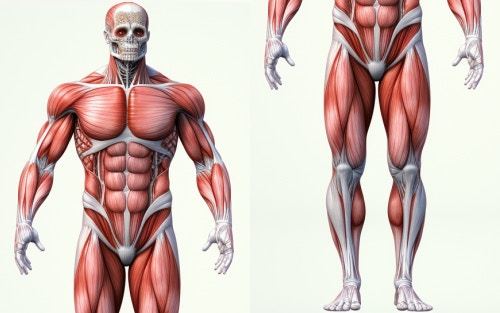
Fascia is a densely woven stringy tissue that offers structural support and safeguards muscles throughout the body. As a network of tissue, fascia links:
muscles
joints
bones
organs
This provides support and maintains their positioning.
When fascia becomes restricted, it can lead to widespread pain and discomfort, which is where Myofascial Release Therapy comes into play.
How Myofascial Release Works
The essence of Myofascial Release Therapy lies in the application of pressure to release tightness and pain in the myofascial tissues. This pressure triggers the abnormal release of acetylcholine, leading to increased muscle fiber activity.
The applied gentle pressure facilitates a stretch into the restricted fascia, helping to release tightness and alleviate pain.
The Importance Of Addressing Myofascial Restrictions
Alleviating discomfort and improving overall well-being necessitates addressing myofascial restrictions. These restrictions refer to the tightness or tension in the fascia, the thin layer of tissue that supports and encases muscles.
Manual techniques involving massaging, kneading, and stretching muscles and fascia directly target and address these restrictions, improving posture and promoting overall wellness.
Techniques and Tools for Myofascial Release
Professionals use manual techniques like gentle, constant massage to release tightness and pain for myofascial release. Various tools, such as foam rollers, tennis or Myo-Release Balls™, and massage sticks, enable individuals to employ various pressures and techniques for releasing fascial tension in a home setting.
Manual Techniques By Professionals
In Myofascial Release Therapy, gentle, sustained pressure is applied to release the fascia using manual techniques. Professionals, such as massage therapists, apply these techniques to loosen and break up scar tissue, thus effectively addressing discomfort and enhancing movement.
Foam Rollers And Their Benefits

In myofascial release, foam rollers prove to be beneficial in numerous ways. Using a foam roller, you can:
Alleviate muscle tension
Enhance range of motion
Promote increased blood circulation
Facilitate expedited recovery
But remember, utilizing them properly is crucial for effective myofascial release.
Self-Myofascial Release For At-Home Practice
An accessible approach to addressing muscle tightness and discomfort is provided by self-myofascial release. This can be done through:
Employing manual techniques such as rubbing and massaging the skin
Incorporating diverse stretching methods
Utilizing tools like foam rollers or massage balls strategically positioned under targeted body areas
By following these techniques, individuals can manage their fascial tension at home.
Identifying and Treating Myofascial Pain Syndrome
Myofascial Pain Syndrome can be identified by symptoms such as:
deep, aching pain in a muscle
persistent or worsening pain
a tender knot in a muscle
difficulty sleeping due to pain
To diagnose this condition, muscle palpation is used to identify myofascial trigger points, often referred to as trigger point areas.

These symptoms can then be alleviated using the targeted approach of myofascial therapy, also known as Myofascial Release Therapy or myofascial trigger point therapy.
Symptoms Of Myofascial Pain Syndrome
The symptoms of Myofascial Pain Syndrome encompass deep, aching pain in a muscle, persistent or worsening pain, a tender knot in a muscle, localized muscle pain, and trigger points that activate pain. Furthermore, individuals may encounter muscle stiffness, fatigue, and disrupted sleep patterns due to pain.
In some cases, it can even lead to emotional disturbances like depression and irritability.
Diagnosing Myofascial Pain Syndrome
Diagnosing Myofascial Pain Syndrome involves a comprehensive physical examination conducted by a healthcare provider, who will palpate for taut bands of muscles. Trigger points are identified through muscle palpation as areas where the muscle is taut and can produce pain when stimulated.
Treatment With Myofascial Release Therapy
During a typical Myofascial Release Therapy session, gentle techniques are used by the therapist to administer targeted pressure to restricted areas in the fascia. It’s generally recommended to undergo one session per week for the initial four to six weeks to observe improvements, particularly for specific chronic ailments.
Who Can Benefit from Myofascial Release Therapy?
Myofascial release therapy can assist a wide range of individuals experiencing tightness in their fascial tissues, including athletes, individuals with chronic pain, and those suffering from specific health conditions such as migraines and carpal tunnel syndrome.
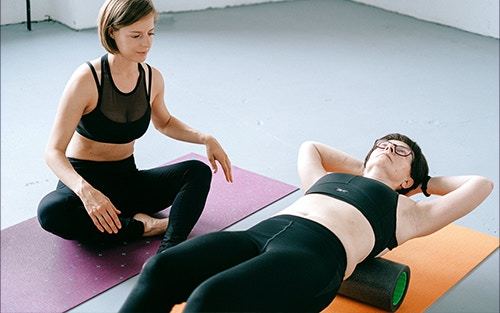
Athletes And Performance Enhancement
Some benefits athletes can derive from Myofascial Release Therapy include:
Augmentation of athletic performance
Enhancement of joint motion
Restoration of body mechanics
Alleviation of inflammation
Boosting circulation
Improvement of range of motion
All of these elements are essential for competition preparation and injury prevention.
Chronic Pain Management
Myofascial Release Therapy demonstrates a moderate effect in addressing chronic pain, specifically in cases of chronic neck pain. It alleviates chronic pain by:
Releasing tightness within the fascia through low-load stretches
Gentle, constant massage
Addressing the web of connective tissue that can contribute to chronic pain conditions
Specific Health Conditions Treated With Myofascial Release
Myofascial Release Therapy is effective in addressing a variety of health conditions, including:
Back and neck pain
Fibromyalgia
Migraines
Rehabilitation of stroke patients
It enhances muscle characteristics and function capacity, improves activities of daily living, joint biomechanics, and muscle flexibility, and reduces fascial adhesion.
Integrating Myofascial Release into Your Wellness Routine
Several benefits can be derived from integrating Myofascial Release into your wellness routine. It can:
Improve joint range of motion
Reduce muscle soreness
Facilitate the recovery process, thereby assisting patients in resuming their daily activities
Complement other therapies such as physical and occupational therapy, massage therapy, and acupuncture, enhancing their effectiveness.
Combining Physical And Occupational Therapy
Combining Myofascial Release with physical therapy allows for addressing various aspects of the body, utilizing a range of techniques to manage pain and dysfunction, leading to improved outcomes in physical therapy.
Similarly, when used in conjunction with Myofascial Release, occupational therapy can enhance occupational performance by implementing a customized treatment plan incorporating Myofascial Release techniques.
Incorporating Massage Therapy And Acupuncture
Both massage therapy and acupuncture can enhance the effectiveness of Myofascial Release. Massage therapy relieves tightness and stiffness, releases pain in myofascial tissues, and reduces sensitivity to pain at tender points.
On the other hand, acupuncture provides immediate pain relief, targets trigger points and promotes relaxation and energy stimulation.
Preparing For Surgery Or Sports Competitions
Myofascial Release Therapy can be a game-changer, whether you’re preparing for surgery or a demanding sports competition. It readies the body for the physical stress of surgery, promoting a more seamless post-surgical healing process and diminishing postoperative discomfort.

For athletes, it provides crucial assistance by:
augmenting athletic performance
enhancing joint motion
restoring body mechanics
alleviating inflammation
boosting circulation
improving range of motion
Choosing the Right Therapist
To choose the right therapist for Myofascial Release Therapy, considerations should be made for professionals like physical, massage, and occupational therapists. These professionals should have the necessary qualifications, including advanced training in massage therapy topics and techniques, graduation from an accredited or recognized manual therapy program, and legal practice in their state.
Physical Therapists And Massage Therapists
In Myofascial Release Therapy, physical and massage therapists play significant roles. They are tasked with evaluating, identifying, and treating fascial restrictions using specific techniques to relieve tightness and pain in the myofascial tissues.
Massage therapists apply these techniques to loosen and break up scar tissue, thus effectively addressing discomfort and enhancing movement.
Occupational Therapists And Their Role
In Myofascial Release Therapy, occupational therapists play a complementary role. They aim to enhance musculoskeletal balance, reduce the risk of falls, and improve occupational performance within the scope of traditional occupational therapy.
This involves the application of slow, sustained pressure at the barrier of a restriction to aid in releasing the tension, improving the range of motion, and alleviating pain, thereby benefiting individuals with conditions impacting their occupational performance.
Finding A Certified Myofascial Release Practitioner
Finding a certified Myofascial Release practitioner is important to ensure effective treatment. Recommended methods for locating an accredited practitioner in your area include using reputable websites such as Myofascial Release Directory or Myofascial Release. These platforms offer comprehensive listings of therapists who have undergone seminars and received training from recognized experts in the field.
Myofascial Summary
Myofascial Release Therapy offers a holistic approach to pain relief and improved mobility by targeting fascial restrictions. Not only does it address discomfort and enhance movement, but it also recognizes the significance of fascia in overall well-being. This therapy can be a game-changer for a wide range of individuals, including athletes, individuals with chronic pain, and those suffering from specific health conditions.
By understanding the science behind this therapy, learning about the techniques and tools used, identifying and treating Myofascial Pain Syndrome, determining who can benefit, integrating it into a wellness routine, and choosing the right therapist, you can harness the full potential of Myofascial Release Therapy.
Remember, health is a journey; every step you take toward understanding and addressing your body’s needs brings you closer to optimal well-being. So, are you ready to embark on your journey with Myofascial Release Therapy?
Frequently Asked Questions
What Are Three Myofascial Release Techniques?
Three common myofascial release techniques are manipulation, traction, and massage. These modalities utilize a combination of traction, compression, and twisting maneuvers to address myofascial tissues.
What Does It Feel Like When Fascia Releases?
When fascia releases, it can feel deeply relaxing and satisfying for many people, often described as a gratifying pain with a sensation similar to a deep itch being scratched.
Is Myofascial Release The Same As Deep Tissue Massage?
No, myofascial release (MFR) is performed differently from deep tissue massage, focusing on addressing the connective tissue with slow, steady pressure and sustained stretching to release tension.
Can You Do A Myofascial Release On Yourself?
Yes, you can perform myofascial release on yourself using tools such as foam rollers and tennis balls, which act as aides for self-massage. These tools can help target muscles and connective tissue for relief.
What Are The Typical Symptoms Associated With Myofascial Pain Syndrome?
The typical symptoms of Myofascial Pain Syndrome include deep, aching pain in a muscle, persistent or worsening pain, a tender knot in a muscle, localized muscle pain, and trigger points that activate pain. If you experience these symptoms, seeking medical attention for an accurate diagnosis and appropriate treatment is important.
Foot Palace Massage Spa Athens
196 Alps Rd Ste 31, Athens, GA30606
(706) 521-5290
To view the original version on Foot Palace, visit: https://yourfootpalace.com/myofascial-release-therapy/
1 note
·
View note
Text
Do Massages Help For Arthritis? The Science And Benefits
Arthritis can be a debilitating condition, causing pain and limiting mobility for millions of people worldwide. But what if there was a way to alleviate some of the discomfort and improve joint function? This is where massage therapy comes in, offering a range of potential benefits for arthritis patients. Do massages help Arthritis? The answer is yes, as they can provide pain relief, enhanced joint mobility, and an overall improvement in quality of life. Join us as we delve into the science behind massage therapy for Arthritis and explore various types of massages, therapist selection, self-massage techniques, and necessary precautions.

Key Takeaways
Massage therapy has been proven to reduce pain, improve joint mobility, and enhance the quality of life for people living with Arthritis.
Various massage techniques offer beneficial relief for arthritis symptoms, such as Swedish, deep tissue, and hot stone.
Self-massage can be an effective way to manage pain when using moderate pressure and gentle techniques. It is important to consult with a healthcare professional before beginning treatment.
Scientific Research – Is Massage Therapy Good for Arthritis
In this section, we will delve into the scientific research surrounding the effectiveness of massage therapy for Arthritis and answer the question, is massage good for Arthritis? We will explore the mechanisms behind how massage therapy works to alleviate arthritis symptoms and improve joint function, supported by various studies and research findings. We aim to provide a comprehensive understanding of why massage therapy can benefit those suffering from Arthritis and osteoarthritis.
Massage For Arthritis In The Knee (Osteoarthritis)
Several studies on knee pain have documented decreased knee pain following massage therapy. Below are details on two specific studies.
Research conducted in 2018 and published in the Journal of General Internal Medicine divided 200 osteoarthritis (OA) patients with knee issues into three distinct treatment groups. The results showed that after eight weeks, those who underwent a one-hour full-body massage every week noticed a substantial improvement in their pain and mobility. This group outperformed the other groups who received light touch or standard care.

Another 2017 study in Oxford Academic’s Pain Medicine reported that participants noted an improved ability to perform daily living activities after experiencing massage therapy. Specifically, participants expressed “1) relaxation effects, 2) improved quality of life associated with receiving massage therapy, and 3) the accessibility of massage therapy in treating osteoarthritis.”
Hip Arthritis Massage Study
The Centers for Disease Control (CDC) reports approximately seven percent of U.S. adults experience hip pain. Many suffering from this condition ask if massage can help Arthritis. To address this inquiry, let’s delve into a study on whether massage therapy benefits hip arthritis patients.
The research study “Hip Pain is Reduced Following Moderate Pressure Massage Therapy” indicates the effectiveness of moderate pressure massage therapy for decreasing hip pain and sleep disturbances. Staff and faculty from a medical school experiencing hip pain were randomly divided into two groups: one that would receive moderate-pressure massage therapy and a control group that would be put on a waitlist. For one month, the massage therapy group received twenty-minute massages weekly.
On the first and last days of the treatment period and one month after, participants were asked to self-report their pain, stiffness, function, mood, sleep, and daily functioning. Pain was evaluated in terms of external rotation, internal rotation, and activities such as sitting, standing, and bending before and after the massage sessions on the first and last day.
Those in the massage group experienced an immediate reduction in pain following their sessions. Comparing the first and last day of the study, those who received massages reported a more significant decrease in pain across all measures and fewer sleep disturbances than the control group. These effects persisted even a month after the study concluded.
The Science Behind Massage Therapy and Arthritis
Massage therapy is a form of body manipulation that can potentially improve blood flow, loosen muscles around joints, reduce pain, improve mood, and increase range of motion, all of which can help decrease arthritis pain. There are two main types of Arthritis, osteoarthritis and rheumatoid Arthritis, and the primary indications of Arthritis are persistent joint pain and rigidity. While the exact mechanisms behind massage therapy’s pain-relieving effects on arthritis patients are still under investigation, it is believed to involve reducing stress and anxiety.
Through moderate pressure, massage therapy has been found to activate pressure receptors beneath the skin, sending signals to the brain that can reduce pain and stimulate the release of neurochemicals such as serotonin. This can help to reduce arthritis pain and relax tension.
This post will detail the specific benefits of massage therapy for pain relief, improved joint mobility, and enhanced quality of life in arthritis patients.
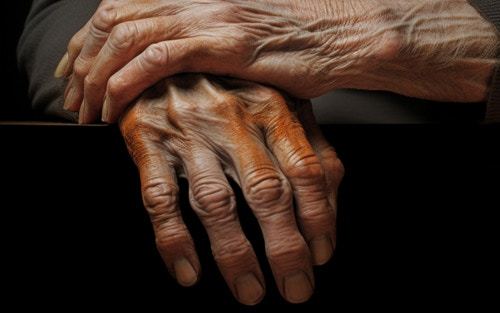
Pain Relief Mechanisms
The exact mechanisms of how massage therapy relieves pain in arthritis patients are still being explored. However, research suggests that moderate-pressure massage and myofascial release are effective in providing pain relief for rheumatoid Arthritis. It is believed that an increase in the brain’s serotonin output is responsible for the pain relief experienced by arthritis patients following massage therapy.
Serotonin plays a significant part in pain relief, blocking pain-related behaviors and modulating dopamine neurotransmission, enhancing serotonin expression, and reducing the release of substance P, which contributes to pain inhibition. Moreover, serotonin can modify serotonin synthesis and metabolism, promoting an overall increase in its tonic effects. These mechanisms combine to provide arthritis patients with pain relief, allowing them to experience decreased discomfort and an increased range of motion after moderate-pressure massage.
Joint Mobility Improvement
Massage therapy can be highly beneficial for arthritis patients regarding joint mobility improvement. Massage therapy aids in alleviating the pain and discomfort associated with Arthritis by reducing muscle tension and stiffness, promoting better circulation, and increasing the range of motion. Scientific studies demonstrate that massage therapy can improve joint mobility in arthritis patients, with some studies even indicating that massage therapy can help reduce pain and stiffness and improve function in patients with osteoarthritis and rheumatoid Arthritis.
One way massage therapy contributes to enhanced circulation and joint mobility is by applying pressure to the muscles and tissues, which encourages blood movement through congested areas and allows for the influx of fresh blood. Enhanced circulation is advantageous for joint mobility in arthritis patients, as it facilitates the delivery of oxygen and nutrients to the joints, reduces inflammation, and eliminates waste products.
Overall, massage therapy has been found to provide short-term improvements in arthritis symptoms and can be used to complement other treatments for Arthritis.
Quality Of Life Enhancement
Studies have shown that various types of massage therapy can improve the quality of life for arthritis patients by reducing pain and fatigue and improving sleep. Massage therapy has been found to have specific benefits on fatigue in arthritis patients, such as reducing pain and anxiety, improving grip strength, increasing circulation, and improving range of motion and flexibility. Furthermore, massage therapy may temporarily improve the mobility of joints and muscles affected by Arthritis, although it does not reduce inflammation or joint damage.
In addition to its physical benefits, massage therapy can potentially improve sleep in individuals with Arthritis. The pressure in the massage can help release the muscles around the joints and increase blood flow, which can aid in reducing pain and stiffness associated with Arthritis. Furthermore, massage therapy may be beneficial in relaxing the muscles, improving joint mobility, and decreasing the production of pain-related neurotransmitters, thus leading to more restful sleep. As a result, incorporating massage therapy into an arthritis treatment plan can greatly enhance the overall quality of life for affected individuals.
Types of Massages for Arthritis Relief
Different types of massages can benefit arthritis patients, with each offering unique benefits and techniques. Massage therapies such as:
Hot stone massage
Deep tissue massage
Sports massage
Trigger point massage
Myofascial release massage
Offer great solutions for arthritis relief. The subsequent sections will further examine the specific benefits and techniques of Swedish, deep tissue, hot stone, and myofascial release massages for arthritis patients.
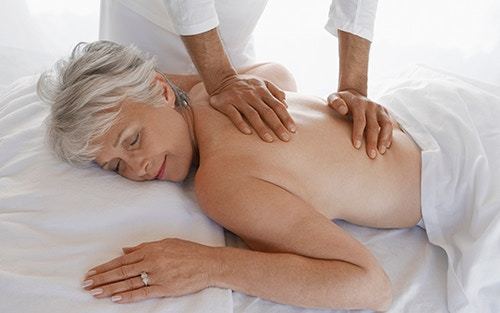
Understanding the various types of massages and their unique benefits enables arthritis patients to make informed decisions about the most effective massage therapy for their specific needs and preferences. This knowledge can help optimize the massage experience, improving symptom relief and overall well-being.
Swedish Massage
Swedish massage is a popular choice for arthritis patients, as it employs long, smooth strokes to decrease muscle rigidity and joint discomfort, increase circulation, and enhance joint range of motion. This type of massage is known for its gentle, relaxing techniques, making it an ideal option for those seeking relief from arthritis pain and stiffness.
Research has indicated that Swedish massage can be especially advantageous for those with osteoarthritis, helping to alleviate pain and improve overall joint function. Techniques used in Swedish massage for arthritis relief include long strokes, kneading, and rhythmic tapping, which work together to increase blood and lymph circulation without causing discomfort. This gentle approach makes Swedish massage a favorable option for many arthritis patients looking to improve their joint mobility and reduce pain.
Deep Tissue Massage
Deep tissue massage is another type of massage therapy that may benefit arthritis patients, as it targets the deeper layers of muscles and connective tissues with firm pressure. However, it’s important to note that deep tissue massage may not be suitable for those with active arthritis inflammation, as it can potentially cause further pain or damage.
If deep tissue massage is considered a treatment option for your Arthritis, consulting with a healthcare professional beforehand to ensure it is a safe and viable option for your specific condition and needs is advisable. When performed by a skilled therapist, deep-tissue massage can help alleviate muscle tension and relieve arthritis pain. Still, it is crucial to approach this type of massage with caution and awareness of any potential risks or limitations.
Hot Stone Massage
Hot stone massage is a therapeutic technique that utilizes heated stones strategically placed on areas of the back to promote relaxation of muscles and relief of tension. This type of massage has been found to:
Improve blood flow
Reduce inflammation in the joints
Promote relaxation of muscles and tissues
Provide pain relief to arthritis patients
In conjunction with Swedish massage therapy, hot stone massage can help alleviate muscle tension and lessen the severity of arthritis symptoms. It is essential to ensure the stones are not too hot. Excessively high temperatures can cause burns or scald scars. When performed correctly, a hot stone massage can be a soothing and effective option for arthritis patients seeking relief from joint pain and stiffness.
Myofascial Release
Myofascial release is a specialized technique that involves manipulating the connective tissues or fascia surrounding body structures such as blood vessels, nerves, and muscles. This type of massage therapy can help reduce pain and increase motion in arthritis patients, making it a valuable addition to an arthritis treatment plan.
To perform myofascial release, therapists use their hands, elbows, or knuckles to apply pressure and stretch the fascia tissues, helping to release tension and improve joint mobility. Myofascial release can be done with the assistance of a therapist or through the use of tools and devices at home. Some standard tools and devices used for myofascial release include:
Foam rollers
Massage balls
Massage sticks
Trigger point tools
These tools and devices offer a versatile and effective option for arthritis patients seeking relief from pain and stiffness.
Choosing the Right Massage Therapist
Finding the right massage therapist for arthritis patients is a crucial step in ensuring an effective and comfortable treatment experience. It is essential to seek referrals, check professional associations, and look for experience with arthritis patients to find a qualified therapist who can address your specific needs and preferences.

The subsequent sections will discuss:
The importance of referrals and professional associations
The value of experience with arthritis patients
The significance of communication and goal setting in selecting a massage therapist for arthritis relief.
Referrals And Professional Associations
Asking for referrals from healthcare professionals or friends and checking professional associations such as the American Massage Therapy Association (AMTA) and the Associated Bodywork Massage Professionals (ABMP) can help you find a qualified therapist specializing in arthritis treatment. These associations have strict standards and requirements for their members, ensuring you receive care from a certified and experienced professional.
Seeking referrals and verifying professional associations fosters confidence in choosing a licensed massage therapist and ensures you receive the best possible care for your arthritis needs. Remember, the right therapist can make all the difference in your massage therapy’s effectiveness and overall comfort and satisfaction.
Experience With Arthritis Patients
It is crucial to choose a massage therapist with experience working with arthritis patients and understands the specific needs and precautions associated with this condition. A knowledgeable and experienced therapist can tailor their techniques and pressure levels to your unique arthritis symptoms, ensuring a safe and effective treatment experience. Among massage therapists, it’s important to find one who specializes in addressing the needs of arthritis patients.
When considering a massage therapist for arthritis pain relief, it’s important to ask the following questions:
What is your experience with arthritis patients?
What types of techniques do you use for arthritis pain relief?
Do you have any references or testimonials from arthritis patients you have worked with?
This information will provide valuable insight into the therapist’s expertise and help you decide on the best massage therapist for your arthritis needs.
Communication And Goal Setting
Effective communication and goal setting are essential components of a successful massage therapy experience for arthritis patients. By discussing your goals, pain levels, and preferences with your therapist, you can ensure a personalized and effective treatment plan tailored to your specific needs, which may include physical therapy alongside massage therapy.
Arthritis patients should feel comfortable discussing their symptoms, concerns, and treatment goals with their massage therapist. This open communication allows the therapist to customize their techniques and pressure levels for optimal relief and comfort while also adjusting the treatment plan based on the patient’s feedback during the session. Remember, a successful massage therapy experience relies on clear communication and collaboration between the patient and therapist.
Self-Massage Techniques for Arthritis Relief
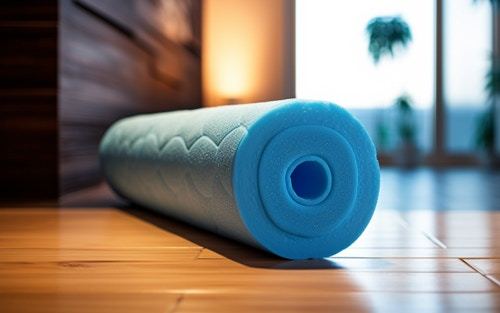
In addition to professional massage therapy, self-massage techniques can offer valuable relief for arthritis patients, allowing them to manage pain and improve mobility at home. These techniques involve the use of tools, heat application, and moderate pressure to alleviate discomfort and enhance joint function.
The subsequent sections will discuss:
Various tools and devices for self-massage
The benefits of heat application before self-massage
The importance of using moderate pressure and proper techniques for effective symptom relief.
Tools And Devices
Self-massage can be performed with your hands or various devices, such as foam rollers, massage balls, or handheld massagers. These tools can help target specific areas of pain and discomfort, providing targeted relief for arthritis symptoms.
Foam rollers, for example, can improve flexibility, reduce stiffness, and relieve pain in affected joints by applying pressure to tight or sore areas. Massage balls can apply gentle pressure to the joints and muscles, providing targeted therapy for arthritis relief. By incorporating these tools into your self-massage routine, you can effectively manage your arthritis symptoms and improve your overall well-being.
Heat Application
Applying heat before self-massage can increase the benefits of the massage by relaxing the muscles and improving circulation. Heat application can be achieved through various methods, such as soaking in warm water, heating pads or hot packs, and warm baths or showers.

By incorporating heat application into your self-massage routine, you can enhance the effectiveness of the massage by allowing for the loosening of stiff joints, providing relief for achy muscles, and increasing the flexibility of muscles and connective tissue. This can result in a more effective and comfortable self-massage experience for arthritis patients.
Moderate Pressure And Technique Tips
Using moderate pressure and proper techniques during self-massage is crucial to ensure effective symptom relief and avoid causing further pain or inflammation. Moderate pressure is advised for a self-massage to relieve Arthritis, as it activates pressure receptors beneath the skin, reducing pain and stress signals.
When massaging sensitive areas affected by Arthritis, it is important to use moderate pressure and gentle techniques to avoid applying too much pressure or causing any pain. By following these guidelines and listening to your body, you can effectively manage your arthritis symptoms through self-massage and enjoy the benefits of improved joint mobility and reduced pain.
Precautions and Contraindications
As with any treatment, it is important to take precautions and consult with a healthcare professional before starting massage therapy for Arthritis, especially during active inflammation or if there are any contraindications. By consulting with a healthcare professional, you can ensure that massage therapy is a safe and viable option for your specific arthritis condition and any other health concerns you may have.
The subsequent sections will discuss precautions for active inflammation and the importance of consulting with a healthcare professional before initiating a new treatment plan.
Active Inflammation
Avoiding deep pressure on the affected joints during active inflammation is crucial, as it may cause further pain or damage. Inflamed joints are already sensitive and tender, and applying deep pressure can further aggravate the inflammation and potentially worsen the condition.
If you are experiencing active inflammation, it is essential to consult with a healthcare professional before undergoing massage therapy to ensure it is safe and suitable for your specific condition. By taking these precautions, you can protect your joints and avoid causing additional pain or damage during massage therapy.
Consult With A Healthcare Professional
Always consult with a healthcare professional before starting a new treatment plan, as massage therapy may not be suitable for all arthritis patients or may need to be tailored to individual needs. By discussing your specific condition and goals with your healthcare provider, you can ensure that massage therapy is a safe and effective option for your arthritis management and overall well-being.
Summary
In conclusion, massage therapy offers a range of potential benefits for arthritis patients, including pain relief, improved joint mobility, and enhanced quality of life. By understanding the various types of massages, choosing the right massage therapist, incorporating self-massage techniques, and taking necessary precautions, individuals with Arthritis can effectively manage their symptoms and enjoy better overall well-being. After answering, is massage good for Arthritis? Be advised every case is unique and must be treated as such. Remember, it is essential to consult with a healthcare professional before starting any new treatment plan and to listen to your body’s needs and preferences throughout your massage therapy journey.
Frequently Asked Questions
Should Arthritic Joints Be Massaged?
Massage therapy is a safe and effective way to relieve symptoms of Arthritis. Studies have shown that it can reduce stiffness, improve the range of motion, and promote blood circulation around affected joints. Massage can also help decrease swelling, reduce muscle tension, and increase flexibility. Before beginning massage therapy, consult with your doctor to ensure it is safe for your particular condition.
Does Massage Reduce Inflammation?
Massage therapy has been shown to reduce inflammation when administered by a professional, as well as improve fluid build-up and circulation. Paragraph 2: It is also suggested that light exercise can be even more effective at reducing inflammation.
Is Heat Good For Arthritis?
Alternating between heat and cold therapy may help ease arthritis symptoms, as heat increases blood flow while cold constricts blood vessels and helps reduce stiffness and inflammation.
What Types Of Massage Are Most Beneficial For Arthritis Patients?
People living with Arthritis can benefit from various massage types, such as hot stone, deep tissue, sports massage, and myofascial release.
What Precautions Should Be Taken Before Starting Massage Therapy For Arthritis?
Before starting massage therapy for Arthritis, consult with a healthcare professional to ensure it is appropriate and avoid massaging actively inflamed joints.
Foot Palace Massage Spa Athens
196 Alps Rd Ste 31, Athens, GA30606
(706) 521-5290
To view the original version on Foot Palace, visit: https://yourfootpalace.com/do-massages-help-for-arthritis-the-science-and-benefits/
1 note
·
View note
Text
Foot Massage & Pregnancy: Safety, Benefits, Risks, And Tips
Imagine a long day of work, running errands, and tackling household chores, all while carrying the extra weight of pregnancy. Your feet are aching, and all you desire is a soothing foot massage. But is it safe for you and your baby? In this blog post, we’ll explore the safety, benefits, risks, and tips of foot massages during pregnancy, helping you to make informed decisions for your comfort and well-being.

We’ll discuss the importance of consulting certified prenatal massage therapists and the pressure points to avoid, dive into the benefits of foot massages for pregnant women, and address the risks and precautions necessary for a safe foot massage pregnancy experience. Lastly, we’ll explore proper foot massage techniques and alternative methods to relieve swollen feet.
Pregnancy Massage Summary
Pregnant women should seek professional guidance from certified prenatal massage therapists for foot massages.
Foot massages can improve sleep and mood, reduce stress and anxiety, relieve muscle/joint pain & enhance relaxation.
Precautions must be taken to ensure safety during a foot massage (e.g., avoiding certain pressure points), as well as alternative methods of swollen feet relief such as elevation, compression & hydrotherapy.
Foot Massage Safety During Pregnancy
Foot massages can be a great way to alleviate discomfort and tension during pregnancy. However, adhering to proper guidelines and precautions is critical when receiving a foot massage to guarantee the safety of both the mother and the baby. Pregnant women should consult a certified prenatal massage therapist with the expertise and knowledge to provide a safe and beneficial massage experience.
The subsequent sections will elaborate on the importance of choosing a certified prenatal massage therapist and the pressure points that should be avoided during pregnancy. This will help minimize the risks and maximize the benefits of foot massages.
Certified Prenatal Massage Therapists
A certified prenatal massage therapist is a professional who has received specialized training in massage therapy techniques tailored to the needs of pregnant women. These experts are well-versed in the appropriate pressure points and techniques to ensure the mother and baby’s safety and well-being.
Consulting a certified prenatal massage therapist allows you to reap the benefits of a foot massage while mitigating potential risks related to deep vein thrombosis or inducing labor. Your therapist can guide you on the best practices for a safe and effective foot massage experience during pregnancy.
Pressure Points To Avoid
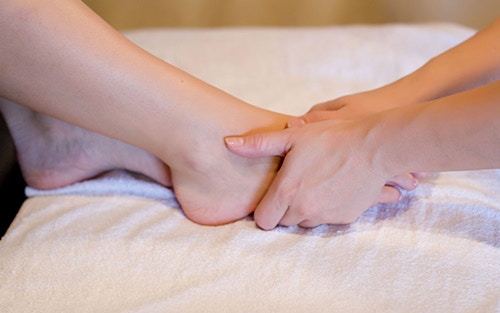
While foot massages can provide numerous benefits for pregnant women, it’s essential to be mindful of certain pressure points on the feet and ankles that can potentially induce labor. Two critical acupressure points to avoid are Spleen 6 (SP6) and Urinary bladder 60. The SP6 acupressure point is located on the inner ankle, approximately three fingers-width above the inner ankle bone. Urinary bladder 60 is situated between the Achilles tendon and the primary ankle bone.
Avoiding these specific pressure points allows pregnant women to relish the benefits foot massages offer without the risk of inducing labor. Communicating with your certified prenatal massage therapist about these pressure points is crucial to ensure a safe and enjoyable foot massage experience.
Benefits of Foot Massages for Pregnant Women
Foot massages offer a myriad of benefits for pregnant women, including:
Improving sleep and mood
Reducing stress and anxiety
Relieving swollen feet and ankles
Alleviating muscle and joint pain
Promoting relaxation and a sense of well-being
These advantages not only enhance the mother’s overall well-being but can also positively impact the baby’s health.
The subsequent sections will delve into the specific benefits of foot massages for pregnant women, encompassing improved sleep and mood, and reduced stress and anxiety. This will provide a deeper understanding of how foot massages can contribute to a healthier and more enjoyable pregnancy.
Improved Sleep And Mood
Regular foot massages during pregnancy can lead to better sleep, improved mood, and reduced back pain. The vagus nerve, the longest of the cranial nerves, plays a crucial role in foot massages. It controls the inner nerve center, and massage has been observed to activate this nerve, resulting in increased blood flow to the areas of the brain responsible for managing depression, stress, heart rate, and blood pressure.

Incorporating regular foot massages into your pregnancy self-care routine leads to more restful nights, a happier disposition, and a more comfortable pregnancy experience.
Reduced Stress And Anxiety
Foot massages during pregnancy can have several benefits, including:
Lowering cortisol levels
Reducing blood pressure
Alleviating anxiety and depression by reducing cortisol levels, foot massages promote relaxation and help manage everyday stressors that come with pregnancy.
Consulting a certified massage therapist is key for a safe and effective foot massage experience during pregnancy. With their expertise, you can focus on enjoying the benefits of foot massages, knowing you’re in good hands.
Enhanced Well-Being
Pregnant women can experience an increased sense of well-being and happiness through the release of endorphins during foot massages. This neurotransmitter is responsible for creating feelings of pleasure and contentment, making foot massages an excellent way to boost your mood and overall well-being.
Integrating foot massages into your pregnancy self-care routine can relieve pregnancy-related discomforts, including foot pain, and promote a positive and enjoyable pregnancy experience. However, it’s important to avoid foot massage therapy in certain situations or if you have specific health concerns.
Risks and Precautions of Foot Massages During Pregnancy
Before diving into foot massages during pregnancy, it’s essential to be aware of the potential risks and precautions associated with this practice. Inducing labor and deep vein thrombosis are two significant concerns that must be addressed to ensure a safe and beneficial foot massage experience.
The following sections will detail these risks, arming you with the necessary information to make informed decisions about which massage type is suitable during pregnancy.
Inducing Labor
Foot massages can potentially induce labor if specific pressure points are stimulated. This can concern pregnant women, especially those nearing their due date or with a history of preterm labor. Consulting a physician before receiving a pregnancy and labor massage, including foot massages, can help determine if such massages are safe for you and your baby.
Awareness of these risks and open communication with your healthcare provider enables you to make informed decisions and relish the benefits of foot massages during pregnancy without compromising your safety or your baby’s well-being.
Deep Vein Thrombosis
Deep vein thrombosis (DVT) is a condition characterized by the formation of blood clots in a deep vein, typically in the legs. Pregnant women should exercise caution when receiving foot massages, as the condition can lead to serious complications, such as pulmonary embolism.
Consulting a healthcare professional before engaging in foot massages can help you identify any potential risks and avoid massaging areas that may be at risk. Taking necessary precautions and understanding the potential risks associated with deep vein thrombosis empowers you to make informed decisions about foot massages during pregnancy, ensuring a safe and enjoyable experience.
Techniques for Foot Massage During Pregnancy
To fully enjoy the benefits of foot massages during pregnancy, it’s essential to know and apply proper foot massage techniques. This ensures a safe and effective experience that caters to the unique needs of pregnant women.

The following sections will delve into Swedish massage techniques designed for pregnancy and provide helpful self-massage tips that can prove beneficial.
Swedish Massage Techniques
Swedish massage techniques designed for pregnancy can help relax muscle tension in the feet and improve circulation. This type of massage involves:
Long, gliding strokes
Kneading
Circular movements on the superficial layers of muscle
Use of massage lotion or oil
Incorporating Swedish massage techniques into your pedicure foot massage routine enables you to enjoy a relaxing and rejuvenating experience that caters to the unique needs of pregnant women.
Self-Massage Tips
Self-massage with specific creams or oils can be beneficial during pregnancy. However, it’s important to discuss the risks with a doctor beforehand. Some recommended lubricants for self-massage during pregnancy include:
Burt’s Bees Mama Bee Leg and Foot Creme
AHAVA Dermud Intensive Foot Cream
Soap & Glory Pink Heel Genius Foot Cream
Olive oil
Jojoba oil
Grapeseed oil
Following proper self-massage techniques and using suitable creams or oils allows you to safely enjoy the benefits of foot massages during pregnancy while minimizing potential risks.
Alternative Methods for Swollen Feet Relief
If you’re hesitant to try foot massages during pregnancy or seek additional ways to relieve swollen feet, alternative methods such as elevation, compression, and hydrotherapy can provide comfort and relief.
The following sections will detail these alternative methods, offering various options for alleviating swollen feet during pregnancy.
Elevation And Compression
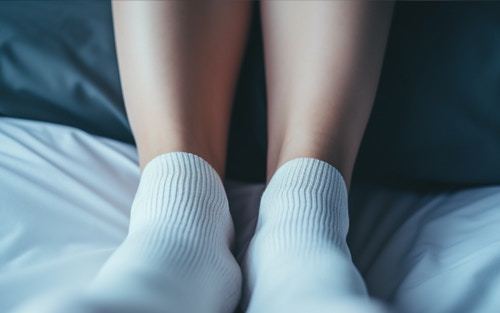
Elevating the feet and using compression stockings can help alleviate swelling during pregnancy. To elevate your feet, use a footrest or a pillow to prop your feet up, ensuring they are positioned higher than your heart level. Compression socks or bandages provide pressure to the feet and ankles, improving blood flow and reducing swelling. Utilizing these simple methods effectively reduces swelling in your feet, making your experience more comfortable.
Hydrotherapy
Hydrotherapy, such as soaking the feet in warm water, can provide relief for swollen feet during pregnancy. Alternating hot and cold water baths may be beneficial in alleviating swelling in the feet. However, it’s important to consult with a medical professional before engaging in hydrotherapy during pregnancy, as it may cause the body to overheat.
With appropriate precautions and guidance, hydrotherapy proves to be a soothing and effective method for relieving swollen feet during pregnancy.
Pregnancy Massage Wrap-Up
In conclusion, foot massages during pregnancy can provide numerous benefits, such as improved sleep, reduced stress, and enhanced well-being. However, it’s essential to consult certified prenatal massage therapists and avoid specific pressure points to ensure a safe and enjoyable experience. Alternative methods, such as elevation, compression, and hydrotherapy, can also relieve swollen feet during pregnancy.

By following the proper guidelines and precautions, pregnant women can safely enjoy the benefits of foot massages and alternative methods, making their pregnancy journey more comfortable.
Frequently Asked Questions
Where Should You Avoid Foot Massage When Pregnant?
It is advised to avoid foot massage around the inner ankle and the top of the foot between the two bones that run from the ankle to the toes, as these are connected to the uterus, and stimulating these points can cause contractions.
Why Can’t You Use A Foot Spa When Pregnant?
Using a foot spa while pregnant is not recommended as it can stimulate contractions, potentially leading to preterm labor.
Is It Safe To Massage Swollen Feet During Pregnancy?
It is generally safe to massage swollen feet during pregnancy, as massage therapy can go a long way in helping you feel better.
Nonetheless, it’s crucial to understand that foot massages may not be suitable for all expectant mothers, particularly those with a susceptibility to blood clots. Therefore, you should consult your doctor before trying any foot massage therapies.
Can My Husband Massage My Breasts During Pregnancy?
It is generally considered safe for your partner to massage your breasts during pregnancy as long as it feels good and comfortable.
Your breasts may be tingly, tender, or sensitive to touch due to the hormonal changes in your body, so ensure you’re comfortable with any massage before beginning.
What Is A Prenatal Massage?
Prenatal massage is a relaxing, full-body massage performed by a certified prenatal massage therapist similar to a Swedish massage, with modifications in body positioning for the safety and comfort of both mother and baby.
Foot Palace Massage Spa Athens
196 Alps Rd Ste 31, Athens, GA30606
(706) 521-5290
To view the original version on Foot Palace, visit: https://yourfootpalace.com/foot-massage-pregnancy-safety-benefits-risks-tips/
2 notes
·
View notes
Text
Flotation Therapy - Definition, Origin, Evolution, and Benefits
Wondering what flotation therapy is and if it’s a good option for your needs? Understanding flotation therapy will help you make informed decisions about what spa therapy to use for stress and tension relief.

yourfootpalace.com gathered essential information about flotation therapy’s definition, origin, evolution, and benefits.
Flotation Therapy Definition
Flotation therapy (sensory deprivation, float therapy, or flotation tank therapy) is a therapy that involves floating in a shallow pool or tank filled with water having a high concentration of Epsom salt (magnesium sulfate). The high salt concentration allows the body to effortlessly float on the water’s surface, providing a weightlessness sensation.
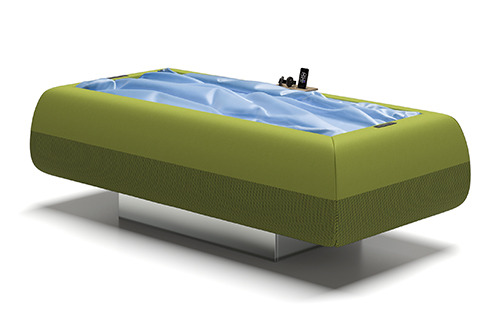
A flotation tank is designed to be lightweight and soundproof, and the water is heated to skin temperature, creating an environment of sensory deprivation. This environment is intended to aid individuals in achieving a deep state of relaxation and mental calmness, as it significantly reduces external stimuli like light and sound.
During flotation therapy sessions, individuals typically wear earplugs and are encouraged to relax, meditate, or let their thoughts aimlessly drift. Some people report feeling a sense of mental and physical rejuvenation after flotation therapy, as it can help reduce stress, alleviate pain, and improve sleep.
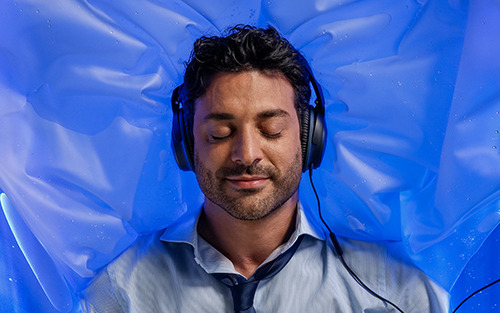
The Origin of Flotation Therapy
Flotation therapy originated in the 1950s when American physician and neuroscientist, John C. Lilly, began researching the effects of sensory deprivation on the human brain. Lilly was interested in exploring the nature of human consciousness. He believed that sensory deprivation could help individuals efficiently achieve altered states of consciousness.
In 1954, Lilly designed and built the first isolation tank, called the "Sensory Deprivation Tank." It was a small, enclosed tank filled with “body temperature” water and had a high concentration of Epsom salt, allowing users to effortlessly float. The tank was designed to be light and soundproof, creating an isolated sensory deprivation environment.
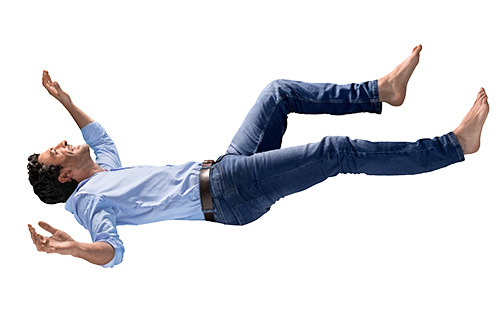
Lilly conducted numerous experiments with the isolation tank, observing the effects of prolonged sensory deprivation on the mind and body. He found that subjects who spent extended periods in the tank reported various experiences, from deep relaxation and euphoria to hallucinations and altered consciousness.
Lilly’s sensory deprivation and isolation tank research established the groundwork for modern-day flotation therapy. In time, other researchers and therapists began experimenting with flotation tanks as a tool for relaxation, meditation, and therapy. Today, flotation therapy is a popular alternative therapy offered at spas, wellness centers, and medical facilities worldwide.
The Evolution of Flotation Therapy
The evolution of flotation therapy has led to the development of dry flotation therapy, which is a more recent innovation in the sensory deprivation and relaxation therapy field.
Dry flotation therapy (dry flotation, dry float, or dry hydrotherapy) is a form of flotation therapy without water immersion. Instead, it uses a special bed or cushion filled with warm, dry air to simulate a floating sensation. The bed or cushion is typically covered with a waterproof and heat-retaining material, like neoprene, to create a sensory deprivation environment.
Dry flotation therapy has several advantages over traditional water-based flotation therapy. It eliminates the need for individuals to disrobe and immerse themselves in water, which can be uncomfortable or inconvenient for some. It also eliminates drowning or infection risks, which can be a concern in water-based flotation therapy.
Dry flotation therapy has similar therapeutic benefits to water-based flotation therapy, like reducing stress, alleviating pain, and improving sleep. It has also been used in multiple clinical settings, including physical therapy, rehabilitation, and pain management.

Note: The development of dry flotation therapy represents an evolution of the original concept of flotation therapy, allowing for greater flexibility and accessibility in terms of how and where the therapy can be provided.
Dry Flotation Therapy Benefits
Dry flotation therapy has several potential benefits for the mind and body. Some of the benefits of dry flotation therapy can include the following:
Relaxation - Like water-based flotation therapy, dry flotation therapy induces a deep state of relaxation, which can help reduce one’s stress and anxiety.
Pain Relief - Dry flotation therapy helps alleviate physical pain, like back or joint pain, by reducing pressure on the body and promoting better blood circulation.
Improved Sleep - Dry flotation therapy improves sleep quality by promoting relaxation and reducing stress and anxiety.
Skin Rejuvenation - Dry flotation therapy’s warmth and gentle pressure can help stimulate blood circulation and promote lymphatic drainage, which helps rejuvenate the skin and promote a healthier glow.
Increased Mindfulness - Dry flotation therapy’s sensory deprivation can help individuals become more mindful and introspective, which promotes self-awareness and personal growth.
Athletic Recovery - Dry flotation therapy can significantly benefit athletes. It can help reduce muscle soreness and promote recovery after intense exercise or competition.
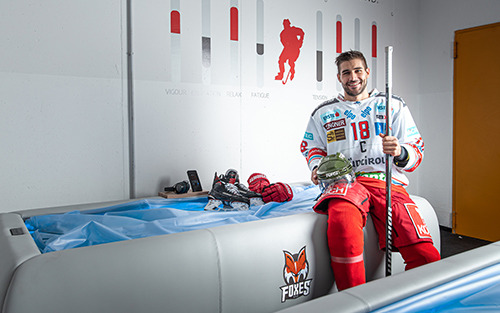
Note: While dry flotation therapy has multiple potential benefits, it may not suit everyone. Those with certain medical conditions, like claustrophobia, high blood pressure, or epilepsy, should consult their primary care physician before trying dry flotation therapy.
Float Therapy
In this article, you discovered what flotation therapy is, its origins, and how it evolved into today’s dry flotation therapy.
Knowing what flotation therapy is and how it has evolved will help you make informed decisions about what therapy is ideal for your needs.
Your lack of understanding about flotation therapy may lead you to choose less effective forms of therapy, leaving your stress and anxiety unresolved.
Sources:
differentbrains.org/a-firsthand-look-at-the-benefits-of-flotation-rest-reduced-environmental-stimulation-technique/
etd.ohiolink.edu/apexprod/rws_etd/send_file/send?accession=osu1574672585011734&disposition=inline
journals.plos.org/plosone/article?id=10.1371/journal.pone.0190292
time.com/floating
sciencedirect.com/science/article/abs/pii/S0272494405800751?via%3Dihub
Foot Palace Massage Spa Athens
196 Alps Rd Ste 31, Athens, GA 30606
(706) 521-5290
To view the original version on Foot Palace, visit: https://yourfootpalace.com/flotation-therapy-definition-origin-evolution-and-benefits/
1 note
·
View note
Text
Flotation Therapy Benefits and Side Effects
Need help determining if dry flotation is the right therapy for you? Understanding dry float therapy’s potential benefits and side effects will help you make informed decisions about your stress and anxiety relief options.
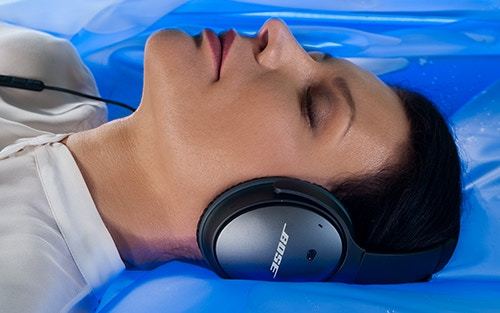
yourfootpalace.com gathered essential information about the benefits and side effects of dry flotation therapy and answered some frequently asked questions.
What is Dry Flotation Therapy
Dry floatation sessions provide the mental relaxation benefits of a traditional float tank without getting wet. You lie on a warm, water-filled membrane that lowers into a bed, whereas traditional float therapy uses a tank or tub filled with water and a large quantity of Epsom salt to keep you afloat.
Traditional float therapy uses baths filled with water and Epsom salt (intended to deeply nourish, remove toxins from, and relax the body and mind). Dry flotation focuses on muscle and joint relaxation, imparting a sensation of weightlessness and deep relaxation.
Dry Flotation Benefits
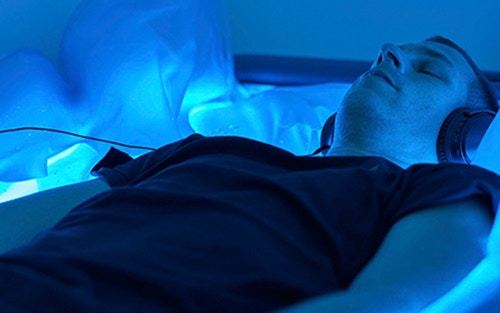
Having gained considerable popularity in recent years, dry flotation therapy has consistently demonstrated its effectiveness in health and well-being treatments and has become a popular companion therapy in day and health spas. Consider the following dry flotation therapy benefits:
Promotes deep and healthy sleep patterns
Speeded recovery time from physical exercise
Increase endorphins
Reduced blood pressure
Improves circulation
Helps combat depression
Reduces anxiety
Potential Side Effects
As with any form of therapy, there are potential side effects that may manifest during or after your therapy experience. Consider the following side effects to dry flotation therapy:
Heightened sense of smell, sound, and light
Nausea (more common for first-time users)
Consider the following frequently asked questions and answers when choosing to have a dry flotation therapy session:
How Many Times a Week Should You Float?
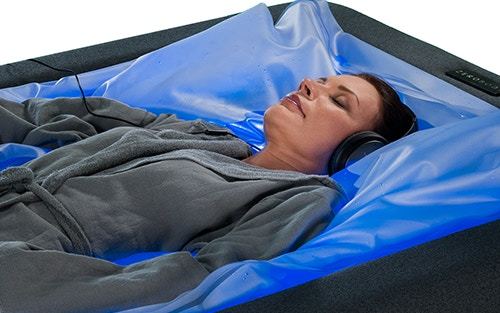
Most patients see float therapy benefits when used two or more times a week and more positive results from longer periods of routine use. The number of float sessions may differ depending on your purpose and symptoms leading you to float therapy. For some people, once a week for 2 months is sufficient to provide lasting results.
Is Float Therapy Good for Depression?
Float therapy has consistently demonstrated its effectiveness in improving sleep quality, significantly reducing stress and anxiety, and letting the body return to a healthy balance of hormones (significant in easing feelings of anxiety or depression).
Should You Shower Before or After Float Therapy?
For traditional float therapy, you must shower before and after getting in the tank. However, you will not be required to shower before or after dry flotation therapy sessions.
Is it Better to Float in the Morning or Evening?
Optimal float times will differ from person to person (depending on lifestyle and schedule). Some are better floating in the early morning, while others have their most profound and beneficial floats in the evening or late at night.
Note: Sometimes, you may feel more alert and energized, while other times, you leave your float session ready to further relax and unwind.
Should You Massage Before or After a Float?
After. Floating for an hour before a massage treatment is highly effective in preparing your muscles. By floating first, your muscles become significantly more relaxed.
Should You Float on an Empty Stomach?
You can float with a full or an empty stomach. However, to avoid the distracting sounds and feelings of your digestive tract, eating two or more hours before your float session is highly recommend.
Can You Fall Asleep During Flotation Therapy?
Yes. Falling asleep during a float therapy session does happen. However, even if you do nod off, your brain is likely in a state of hypnagogia.
Note: Hypnagogia is the transition between wakefulness and sleep. During this state, it’s normal to experience some visual, audio, or other hallucinations. During hypnagogia, it’s common to experience muscle jerks and sleep paralysis.
Discovering Dry Float Therapy
In this article, you discovered information about the benefits and side effects associated with dry float therapy and found answers to frequently asked questions.
Knowing the benefits and potential side effects of dry flotation therapy will help you make informed decisions when deciding how to support your health and well-being.
Not knowing about or trying dry float therapy may leave you without a treatment that could significantly ease your tension, anxiety, or stress.
Sources:
journals.plos.org/plosone/article?id=10.1371/journal.pone.0190292
time.com/floating
people.com/health/we-tried-it-dry-flotation-treatment
Foot Palace Massage Spa Athens 196 Alps Rd Ste 31, Athens, GA 30606
(706) 521-5290
Foot Palace Massage Spa Braselton 2095 Highway 211 NW Suite 7B, Braselton, GA 30517
(678) 963-5958
For the original version of this article visit: https://yourfootpalace.com/flotation-therapy-benefits-and-side-effects/
#Massage Athens Ga#Spa in Athens Ga#Foot Massage Athens Ga#Flotation Therapy Athens Ga#Dry Flotation Therapy Athens Ga
0 notes
Text
Dry Floatation Therapy – Everything You Need to Know
Looking for an effortless way to achieve stress and anxiety relief and serenity? Understanding how dry floatation therapy can help you find significant health benefits without the inconvenience of being submerged in a tank.
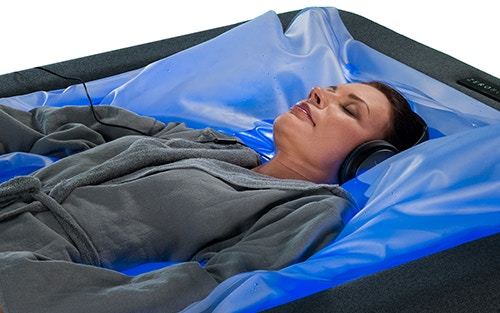
yourfootpalace.com gathered information about dry floatation therapy and its effortless physical and mental benefits for all ages.
What is Dry Floatation Therapy?
During a dry flotation therapy session, you lie floating while gently cradled by a dry membrane allowing all your troubles to dissipate while experiencing a sensation of weightlessness and remaining completely dry. Subtle vibrations massage your body, releasing muscle tension and leaving you in a transcendent state.
Note: Dry floatation and float therapy differ in that; For dry floatation, you will be lying on a warm, water-filled membrane that lowers into a bed. Traditional float therapy uses a bath or tank filled with water and an excessive amount of Epsom salt to keep you afloat. Dry floatation offers people a faster, less messy, therapeutic experience while providing all the significant benefits of traditional float tanks.
Dry Floatation Therapy Benefits
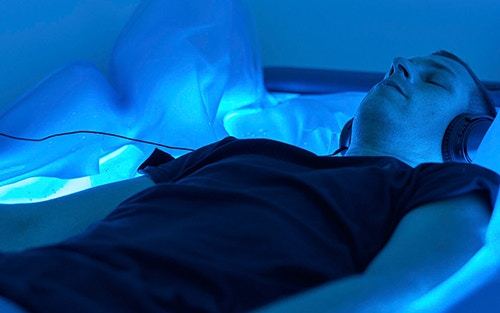
For those seeking increased physical health benefits, dry flotation helps shorten recovery time from exercise, increases the natural production of endorphins, reduces blood pressure, and improves circulation. Dry floatation can reduce chronic pain, with users experiencing significant pain reduction after multiple dry floatation therapy sessions. Consider the following additional benefits:
Dry floatation therapy benefits your mental state by:
Reducing insomnia and other sleep disorders
Improving your sleep quality
Accelerating jet-lag recovery
Improving cognitive and learning abilities
Reducing the physical side-effects of stress (headache, tachycardia, chronic fatigue, muscle tension, abdominal pain/discomfort, gastrointestinal disorders, etc.)
Reducing the psychological side-effects of stress (irritability, chronic depression, hyperactivity, hypotonicity, etc.)
Dry floatation therapy benefits your body by:
Significantly improving relaxation (normalizing your breathing rate, stabilizing your blood pressure, etc.)
Increasing endorphin production
Improving lymphatic and venous drainage
Improving lactic acid drainage
Reducing inflammation
Naturally boosting your immunity
Reducing joint and muscle pains
Improving muscle recovery, strength, and tone
Increasing oxygenation
Improving overall athletic performance
Increasing energy
Leaving you feeling refreshed, relaxed, and happy
Note: Over the course of multiple dry floatation therapy sessions, individuals can expect to experience a unique combination of physical and mental benefits.

Floatation Rest History
The history of “Floatation-Rest” dates back to the 1950s when Drs. Jay Shurley and John Lilly (National Institute of Mental Health) became interested in understanding how the human brain would respond to an environment devoid of external sensory input.
Through experimentation, it was discovered that participants maintained full awareness rather than falling into a deep sleep or losing consciousness. Initial iterations used various masks to shield the brain from sensory input. The first fully immersive float tank was built in 1957, when Dr. Shurley constructed his laboratory (Oklahoma City Veterans Administration hospital). In this first Floatation-Rest version, the participant was immersed vertically in a tank of water with a helmet connected to breathing tubes for ventilation surrounding their head.
In the 1970s, Glenn Perry (together with John Lilly) invented a horizontal version of the float tank that eliminated helmet use. This newer iteration has participants lay supine in a shallow pool of Epsom salt-saturated water, allowing them to effortlessly float comfortably with their eyes, nose, and mouth above the water’s surface.
This change in design made floating available and more appealing to a significantly wider audience. However, many still found the tanks too confining and claustrophobic. Consequently, float therapy experienced a long dormancy period until this past decade, when the practice has rapidly increased in popularity, bolstered by the creation of more spacious tanks and pools.
Today, with Zerobody, the floatation wellness experience is as easy as lying down and letting go. You no longer need to disrobe, shower, wear a breathing apparatus, or submerge yourself. Zerobody completely frees you from stress and gravity. When you lie on Zerobody:
The rigid panel lowers
Your body is wrapped in a soft, lukewarm embrace (400 liters of basal temperature water in an innovative membrane)
You’re not moving or subject to any currents, ripples, or splashes (as is when floating on a river or in a pool)
Your Zerobody dry floating experience session at Foot Palace begins with selecting your preferences for chromotherapy lighting, guided meditation, or element music to deliver a complete regenerative and rejuvenating experience for the body and mind.
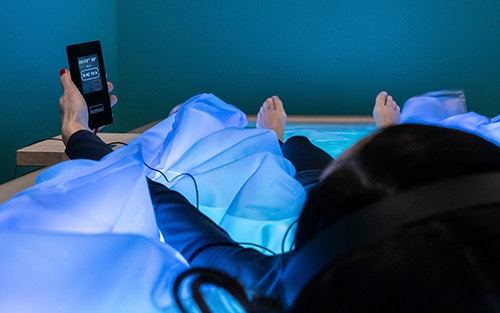
Dry Float Therapy
In this article, you discovered information about dry floatation therapy, how it differs from traditional float therapy, and the physical and mental benefits users experience.
Using dry floatation therapy can leave you feeling completely refreshed and rejuvenated without the need to disrobe, shower, or go through any preparation.
Other physical and mental therapy methods may leave you stressed or anxious, needing to disrobe, shower, or prepare for the session.
Sources:
journals.plos.org/plosone/article?id=10.1371/journal.pone.0190292
pickenstech.org/blog/pickens-technical-college-esthetician-pathway-could-dry-flotation-disrupt-the-industry/
people.com/health/we-tried-it-dry-flotation-treatment/
Foot Palace Massage Spa Athens
196 Alps Rd Ste 31, Athens, GA 30606
(706) 521-5290
Foot Palace Massage Spa Braselton
2095 Highway 211 NW Suite 7B, Braselton, GA 30517
(678) 963-5958
For the original version of this article visit: https://yourfootpalace.com/dry-floatation-therapy-everything-you-need-to-know/
#Dry Floatation Therapy#Dry Floatation#Dry Float#Dry Float Therapy#Massage Athens Ga#Foot Massage Athens Ga
1 note
·
View note
Text
Understanding and Improving Foot Health
Need help understanding, improving, and maintaining foot health? Knowing what your feet may be telling you about your body can help prevent severe illness and motivate you to take better care of them.
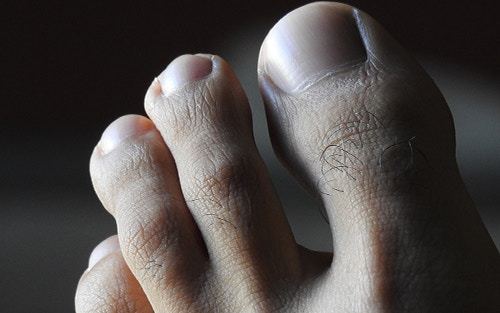
Foot Palace gathered information about how your feet can forewarn you of potential physical issues and how you can significantly improve your foot health.
What Do Your Feet Say About Your Health?
Your feet can tell you about your health if you observe and pay attention to them. Often, the feet are among the first parts of the body to experience and display symptoms when something may be abnormal. Consider the following foot irregularities and what they may represent:
Swelling (Edema) – Seeing abrupt swelling in one or both feet or toes can be alarming (and rightfully so). This condition is typically due to another inconspicuous issue. Swelling can be caused by or be a strong indicator of:
Gout
Heart failure
Kidney failure
Cellulitis infection
Neuropathic arthropathy
Potential deep vein thrombosis (DVT)
Arthritis
Identifying the cause of swollen toes and feet allows patients to get the medical attention they need before any of these issues become more serious.
Cold Feet or Toes – Cold feet or toes can be an indication of developing conditions like:
Diabetes
Poor blood circulation
Vascular issues
Peripheral artery disorder (PAD)
Note: Sometimes, cold feet can be the need to wear a pair of socks, but it can be a sign of something more severe and should be closely monitored.
Burning Sensation – Sometimes, a slight or intense burning sensation can be felt in the soles of the feet. Typically, this sensation is caused by peripheral neuropathy (caused by diabetes or other factors) or peripheral artery disorder (PAD). While burning sensations in the soles of the feet are often attributed to nerve damage, there can be other reasons, like common infections or Athlete’s foot.
Ulcers and Sores – When a sore or an ulcer appear on your foot (and won’t heal properly), it could be a sign of poor or constricted blood circulation from diabetes or peripheral neuropathy. A stubborn ulcer or a sore on the foot can also be an indicator of evolving skin cancer. If you discover a sore or an ulcer on your foot, allow time for it to heal. However, if it does not heal in a reasonable time, it could be a sign that there is a more severe underlying issue needing immediate attention.
Deformed or Discolored Toenails – Some common causes for your toenails to change their shape or appearance are:
Nail fungus
Overuse from repetitive trauma (running, hiking, dancing, kicking, etc.)
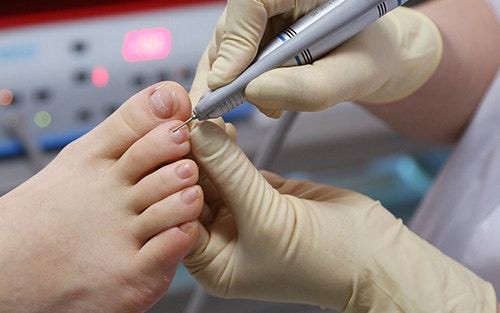
This condition can also be an indicator of the following:
Psoriasis
Anemia
Melanoma (skin cancer)
Tip: If you detect changes in toenail shape or discoloration, see your primary care physician for evaluation, testing, and referrals to specialists.
Foot Drop – This is a general term for difficulty lifting the front of the foot, often called “drop foot.” Among the most common causes of foot drop is peroneal nerve injury. The peroneal nerve is an extension of the sciatic nerve. This nerve supplies movement and sensation to the lower leg, foot, and toes. Seek medical attention if you experience the following:
You suddenly find your toes dragging on the floor when walking or trying to take a step
Experience radiating or sharp leg pain
Fall
Tip: See your doctor immediately if you develop new weaknesses or numbness (sensory loss).
Charcot Foot – a condition (often resulting from untreated diabetes) in which the foot’s bones are weakened and can fracture. With continued walking, the foot eventually changes its shape. As the disorder advances, the joints can collapse, and the foot will develop an abnormal shape, like a rocker-bottom or rounded appearance.
Improve and Maintain Foot Health
Foot health is crucial for everyone (of all ages). Most don’t think or care about foot health, but it is absolutely essential to prevent foot health issues, keeping your entire body healthy. Consider the following to improve and keep your feet healthy:
Regularly Inspect Your Feet – Regularly check your feet for blisters, redness, cuts, or cracked skin. If you notice any abnormalities, contact your doctor. Never ignore a problem with your feet; if you have been diagnosed with diabetes, check your feet daily.
Tip: If you can’t maneuver to see the bottom of your feet, use a hand-held mirror with magnification.
Trim Toenails Regularly – Maintain your toenails trimmed but not too short (when nails are cut too short, they can become ingrown, causing swelling, soreness, or infection). Cut your nails straight across and carefully file any sharp edges. If you are unable to reach your toenails, a podiatrist can help. If you choose to use a relative, friend, nail salon, or spa, advise them not to cut your toenails too short or injure your skin when filing.
Clean Your Feet Daily – Wash your feet daily in lukewarm water. Water that is too hot or cold can damage your skin, especially in those with diabetes who have decreased skin sensation. Use a soft washcloth or sponge and gentle, lathering soap. Then, rinse thoroughly and completely dry before putting on your socks and shoes.
Always Wear Clean, Dry Socks – When your feet sweat, moisture gets held against your skin by most socks. You can prevent developing skin irritations and foul odors by using clean, dry socks every day. Having diabetes increases the risk of developing a range of foot problems (people with diabetes should consider using socks designed with cushioning and moisture-wicking fiber).
Tip: Bunched-up or tight around-the-ankle socks can cause severe irritation or circulatory problems.
Wear Well-Fitted Shoes – Poorly-fitting shoes may cause blisters, potentially leading to infection. Ensure you choose footwear that does not irritate your feet. Instead, wear shoes that properly support your feet and ankles while standing, walking, or participating in physical activities.
Control Your Blood Sugar (Diabetes) – High blood sugar levels can result in nerve damage, causing reduced blood flow and the loss of skin sensation. Reduced blood flow can make it more challenging for your feet to heal from surgery, injury, or resist infection.
Tip: If you need assistance or advice on getting started with physical activities to improve your health and prevent chronic conditions (or if you already have diabetes), a licensed physical therapist can help you design a safe and effective exercise program and treatment plan specific to your needs and health goals.
Moisturize Your Feet – Keep your skin soft and healthy by moisturizing your feet every night. This helps prevent itching or cracking and allows you to thoroughly inspect your feet.
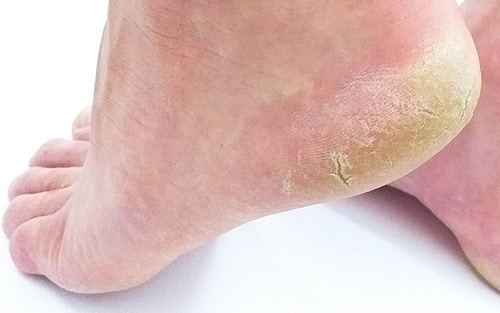
Tip: Schedule a weekly, bi-weekly, or monthly foot massage or spa day to provide extra care and professional attention to your feet.
Foot Health
In this article, you discovered crucial information about how your feet can alert you to grave physical conditions and what to do to improve foot health.
Knowing what your feet can alert you to can help you seek early help for potentially life-threatening conditions while motivating you to pay closer attention to them and their health.
Your poor interpretation of foot-related problems can result in your delayed reaction to what may be severe and life-threatening health conditions.
Sources:
cdc.gov/diabetes/library/features/healthy-feet.html
niddk.nih.gov/health-information/diabetes/overview/preventing-problems/foot-problems
mayoclinic.org/diseases-conditions/foot-drop/symptoms-causes/syc-20372628
nyc.gov/site/doh/health/health-topics/healthy-aging-tend-to-your-feet.page
uclahealth.org/news/happy-feet-10-tips-for-maintaining-healthy-feet
Foot Palace Massage Spa Athens
196 Alps Rd Ste 31, Athens, GA 30606
(706) 521-5290
Foot Palace Massage Spa Braselton
2095 Highway 211 NW Suite 7B, Braselton, GA 30517
(678) 963-5958
Return To Blog
For the original version of this article visit: https://yourfootpalace.com/understanding-and-improving-foot-health/
#Foot Care#Foot Health#Health And Wellness#Massage Athens Ga#Spa in Athens Ga#Massage Places in Athens Ga
0 notes
Text
What is a Spa Day – Your Questions Answered
Uncertain about what happens or how to prepare yourself for a spa day? Knowing how spa days work and how to get ready for one will make your experience more relaxing and beneficial to your health and wellness.

yourfootpalace.com gathered essential information about spa days and answered frequently asked questions about what they are and how to prepare for one.
What is a Spa Day
A day spa is a type of personal service shop used for therapeutic treatment, like massages, beauty treatments, manicure/pedicure services, and may include vending the goods, or merchandise, related to the services provided at the day spa.
Generally speaking, the treatments typically found at day spas are non-invasive and non-surgical. These are treatments that can be completed quickly or treatment packages aimed at your relaxation and rejuvenation. When you consider spa days, you should think of pampering being the primary objective.
Note: Massages and spa treatments can be powerful tools to help you regain control of your health and well-being.
For a better understanding of spa days, consider the following frequently asked questions and their answers:
1. What Happens in a Spa Day?
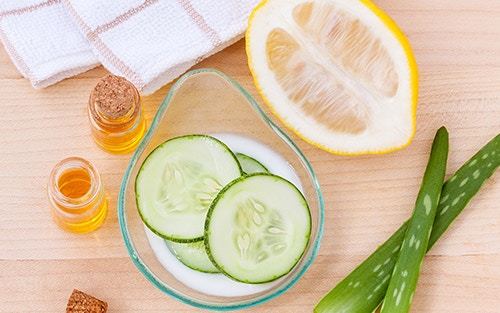
Treatments that may be provided include body massages, hair, foot massages, facials, waxing, microdermabrasion, body treatments, hot stone treatments, manicures, pedicures, and aromatherapy.
2. What do You Wear to a Spa Day?
Spas typically want their guests to be comfortable, so you should wear non-restrictive clothing garments like yoga bottoms, lounge pants, loose-fitting T-shirts, sweatshirts, and hoodies are encouraged at most day spas.
3. Do You Take Off Your Clothes at a Spa?
The answer to this question depends primarily on the day spa and its services. Typically, for full-body massages and body treatments, you disrobe completely. For your convenience, these spas will provide paper undergarments to wear during body treatments.
4. What do Couples do at a Spa?
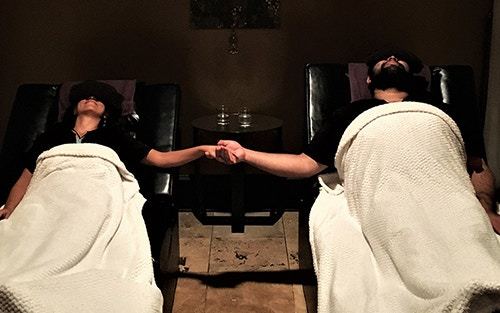
When going to a full-service day spa, a couple’s massage will typically include access to showers, hot tubs, lounging areas, and all other spa amenities. Many couples’ massage treatments may have enhanced amenities like champagne, chocolates, and fruit.
5. What do I Bring to a Spa Day?
The typical spa day includes a robe, slippers, and a towel upon arrival, but in most cases, you are permitted to bring your own (if you prefer). If you intend on using the spa’s amenities, bring comfortable gym clothes, a swimsuit, or personal hygiene items like a toothbrush and deodorant.
6. Do I Need to Take a Towel to a Spa Day?

Good spas will provide towels and robes for use around the spa. Request an extra towel when you need a fresh and dry one. However, you should bring a spare towel to wrap around your hair or for emergencies.
7. What’s the Minimum Age for a Spa Day?
Spas do not typically permit children under 16. There are rare exceptions that have treatments for younger teenagers, but they are usually strictly limited to minimal treatments like manicures and pedicures.
8. Do You Shower Before or After a Spa?
It is crucial to shower before your scheduled spa day (this removes sweat, dead skin cells, and personal care products like cologne, perfume, and deodorant).
9. Should You Shave Before a Spa Day?
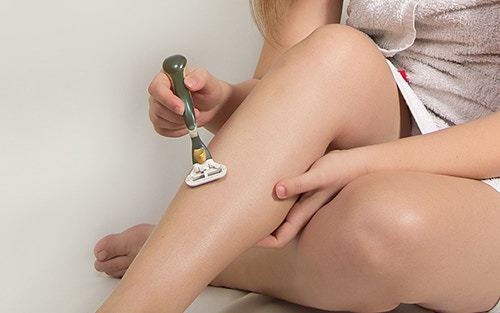
Shaving is typically recommended before your appointment. However, be sure to do so a minimum of four to six hours prior. Some products used in spa treatments may irritate newly-shaven skin.
10. What Should You Not do in a Spa?
While you may be feeling overly relaxed, oily, and sleepy, be sure you’re well-versed in spa etiquette and avoid the following:
Misinterpreting the spa’s dress code (ask about the dress code when booking your spa day or visit the spa’s website for instructions)
Using cell phones and other electronic devices
Shaving in the shower (this is a significant hygiene “no-no”)
Chatting with employees and patrons (most are there to absorb the relaxing sounds and aromatherapy – not to engage in idle conversation)
Tipping in the treatment room or area (tips are generally included when you purchase your package)
Coming on or flirting with employees and other patrons
Consuming alcohol or illegal substances before treatments
Exposing your private parts while moving about the spa
Tip: Don’t wait until the last minute to book your spa day; arrive 10 to 15 minutes early.
Spa Days
In this article, you discovered what a spa day is and found answers to your most frequently asked questions.
Understanding what services are available in a day spa and how to prepare for a spa day will help you fully absorb the relaxing benefits of the massage, environment and pampering.
Your misunderstanding about how day spas operate and how to prepare for a spa day can leave you in an awkward position, unable to benefit from the relaxing and rejuvenating setting they try to create for you.
Sources:
evergreenbeauty.edu/blog/exploring-the-different-types-of-spas/
mayoclinic.org/healthy-lifestyle/stress-management/in-depth/massage/art-20045743
ahealthiermichigan.org/2013/04/19/benefits-of-spa-treatments-for-stress-awareness-month/
nytimes.com/2020/02/25/travel/spa-etiquette.html
oprah.com/style/spa-etiquette/all
Foot Palace Massage Spa Athens
196 Alps Rd Ste 31, Athens, GA 30606
(706) 521-5290
Foot Palace Massage Spa Braselton
2095 Highway 211 NW Suite 7B, Braselton, GA 30517
(678) 963-5958
For the original version of this article visit: https://yourfootpalace.com/what-is-a-spa-day-your-questions-answered/
0 notes
Text
How to Practice Self-Care
Reduce the stress, anxiety, and psychological load that lead to mental and health challenges. Knowing how to include or increase self-care activities in your routines will help you better manage serious life events and live a healthier life.

yourfootpalace.com gathered essential information on activities, habits, and subtle changes you can make to improve your self-care awareness and routines.
What is Self-Care?
Self-care is the process of taking care of oneself with behaviors and activities that promote health and active management or prevention of illness. Individuals engage in some form of self-care daily through food choices, exercise, sleep, meditation, and dental care.
Types of Self-Care
Although self-care is a relatively simple concept, it is frequently overlooked as our habits, obligations, finances, illnesses, and daily stressors can occupy and consume our thoughts and activities. Consider the following breakdown of self-care types and how you can apply them in your routines:
1 – Spiritual Self Care – Activities that nurture your spirit and allow you to expand your thoughts. Spiritual self-care does not have to be religious in any way, although for some, it is.
Examples: Meditation, yoga, visiting a church or other place of worship, spending time outdoors in nature, and dedicating time for self-reflection.
2 – Emotional Self-Care – Activities that help you recognize, connect, process, and reflect on your thoughts and emotions.
Examples: Regularly seeing a therapist, keeping a daily journal, creating art, or playing music.
3 – Social Self-Care – Activities that nurture and provide substantial depth to the relationships with friends and relatives in your life.
Examples: Brunch with friends, going on a movie date, making time to regularly call your mom, dad, siblings, and friends.
4 – Practical Self-Care – Essential tasks that fulfill core (primary) aspects of your life to prevent difficult, confusing, or stressful situations.
Examples: Following a budget, taking professional development courses, organizing your kitchen, garage, and closet.
5 – Mental Self-Care – Activities that stimulate your mind or your intellect.
Examples: Reading a book, painting, crafting, solving puzzles, playing chess, going to a museum, or attending a lecture.
6 – Physical Self-Care – Activities that improve your physical health.
Examples: Taking a walk during lunch breaks, sleeping at least eight hours a day, and staying hydrated.
Note: How you treat yourself physically can have far-reaching implications and significantly influence every other self-care type.
Physical Self-Care Needs
Physical self-care includes how you are fueling your body, how much quality sleep you are getting, how much physical activity you are getting, and how well you are caring for your physical needs. Consider the following:
Food, Drink, and Diet – Your short and long-term health depends on the food and beverages (and quantities) you consume.
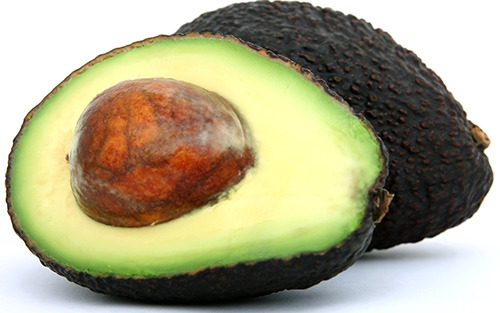
Here are some ways to improve your eating habits:
Eat more slowly
Eat when you are truly hungry, not when you are tired or anxious
Plan your meals ahead of time to ensure that you eat healthy, well-balanced meals
Avoid fast food as a quick fix (slow down and cook your meal)
Choose healthier, more nutritious snacks like fruit or unsalted nuts
Tip: Consult a nutritionist to help you develop a healthier, more impactful diet.
Here are some ways to improve your drinking habits:
Consume Adequate Fluids (Water, Juice, etc.) – The U.S. National Academies of Sciences, Engineering, and Medicine has determined that an adequate daily fluid intake (in a temperate climate) is approximately 124 ounces of fluids a day for men and about 92 ounces for women.
Reduce or Eliminate Alcohol Consumption – Controlling your alcohol consumption can lower your blood sugar, help you lose weight, and reduce incidences of headaches or heartburn.
Note: There’s no reason to be concerned that water may dilute or interrupt your digestive enzymes. According to the Mayo Clinic, drinking water during or after a meal helps how your body breaks down and processes food.
Here are some perspectives on diets:
Avoid “Fad Diets” – Popular or fad diets can cause severe health problems like nutritional deficiencies, nutritional excesses, worsening medical conditions, eating disorders, and feelings of distress or social isolation.
Consult a Nutritionist – A nutritionist can help you assemble a healthy, balanced, and safe diet to help you gain or lose weight in a controlled manner.
Note: A healthy diet rich in fruits, vegetables, whole grains, and low-fat dairy can reduce your risk of heart disease by helping you maintain healthy blood pressure and cholesterol levels.
Exercise – Being physically active can significantly and steadily improve your brain health, help manage your weight, reduce risks of disease, strengthen bones and muscles while improving your ability to do everyday activities. Consider the following exercises:

Walking – This exercise is simple, natural, and powerful
Biking – This exercise strengthens your core and lower body
Swimming – Excellent cardio and full-body workout
Running – Jogging and running are considered aerobic exercises
Dancing – This is another full-body workout hinged on cardio strengthening
Weightlifting – This involves moving parts of your body against some kind of resistance
Note: Weight training applies stress to the muscles that cause them to adapt and get stronger, similar to how aerobic or cardio exercises strengthen your heart.
Sleep – Sleep is an essential function allowing your body and mind to recharge, leaving you refreshed and alert when you wake up. Healthy sleep also assists the body in remaining healthy by combatting diseases and healing after injury. Without sufficient sleep, the brain cannot function properly. Consider the following:
Make sure your bedroom is quiet, dark, relaxing, and at a comfortable temperature
Avoid large meals, caffeine, and alcohol before bedtime
Remove electronic devices, such as TVs, computers, and smartphones, from the bedroom
Exercise
Note: National Sleep Foundation advise healthy adults to get between 7 and 9 hours of sleep per night.
Massage – It is well-established that massage is a highly effective treatment for reducing stress, anxiety, and headaches. Therapeutic massage elevates these benefits by giving your body a chance to relax, unwind, and repair itself. Consider the following:
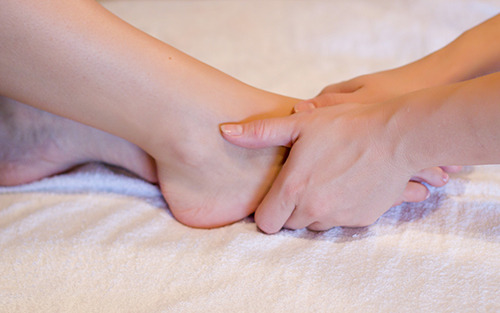
Schedule regular spa days
Plan a couples massage
Include facial massages in your nightly routine
Tip: A general recommendation is to have a massage every 1 to 3 weeks, especially if there has been a specific injury, strain, or tension in any area.
Self-care means taking the time to participate in activities that help you live well and improve your physical and mental health. Regarding mental health, self-care can help you manage stress, lower the risks of illness, and significantly increase your energy.
Practicing Self-Care
In this article, you discovered how to define self-care and adopt activities, habits, and changes that improve your health and well-being.
Practicing self-care will help you stay healthy, avoid chronic illnesses, remain active, and adapt or respond well to adversity.
Ignoring your need for self-care can leave you overly stressed, anxious, sick, prematurely aging and overall less well.
Sources:
mayoclinic.org/healthy-lifestyle/nutrition-and-healthy-eating/expert-answers/digestion/faq-20058348
cdc.gov/healthyweight/healthy_eating/
thensf.org/how-many-hours-of-sleep-do-you-really-need/
Foot Palace Massage Spa Athens
196 Alps Rd Ste 31, Athens, GA 30606
(706) 521-5290
Foot Palace Massage Spa Braselton
2095 Highway 211 NW Suite 7B, Braselton, GA 30517
(678) 963-5958
For the original version of this article visit: https://yourfootpalace.com/how-to-practice-self-care/
0 notes
Text
Anxiety Definition, Causes, and Relief
Prevent slipping into depression or allowing anxiety to cause confusion and angst in your life. Knowing how to recognize and deal with anxiety will help you remove its triggers and find relief from its destructive nature.

yourfootpalace.com gathered crucial information on the definition, causes, and ways to find relief from anxiety.
What is Anxiety?
Anxiety is an overwhelming feeling of fear, dread, and uneasiness. It can cause you to sweat, feel restless and tense, and have an increased heartbeat. Anxiety can be a normal reaction to mounting stress. You might feel anxious when confronted with a family illness diagnosis, a challenging problem at work, before taking an important test, or before making a crucial decision.
Note: Anxiety can be perfectly normal in stressful situations like public speaking or taking a test. Anxiety is only an indicator of an underlying disease when your feelings become excessive, consuming, and interfere with your routines and daily living.
What Causes Anxiety?
Highly challenging experiences in childhood, adolescence, or adulthood are common triggers for anxiety problems. Experiencing stress and trauma when you’re at a very young is likely to have a tremendous and long-term impact. Experiences that can trigger anxiety problems include traumatic accidents, physical or emotional abuse, etc.
What is an Anxiety Disorder?
An anxiety disorder is a mental health condition. If you have been diagnosed with an anxiety disorder, you may respond to specific things, sounds, and situations with fear and dread. You may also experience physical signs of anxiety, like an accelerated heart rate and sweating.
It is perfectly normal to experience some anxiety. As previously mentioned, you may feel anxious or nervous if you have to tackle a problem at work, go to an interview, or make an important decision. And this anxiety can work to your benefit. Anxiety can help you notice dangerous situations and will help you focus your attention so you stay safe.
Are Anxiety Disorders Common?
Yes. Anxiety disorders are among the most common mental health conditions in the U.S. They affect about 40 million Americans. These conditions happen to nearly 30% of all adults at some point. Anxiety disorders will most often begin in childhood, adolescence, or early adulthood.
Anxiety Management and Treatment
An anxiety disorder is similar to any other health problem that requires treatment. Though tips may help in managing your anxiety, it’s not often something you can just will away; this condition is not a matter of self-discipline or attitude. Researchers have made significant progress (in the last few decades) in treating mental health conditions. Your healthcare provider can tailor a treatment plan that works for you. Your plan may combine medication and psychotherapy.
Medications for anxiety disorders often include:
• Anti-anxiety medications, like benzodiazepines, can significantly decrease your anxiety, panic, and worry. They work quickly, but your body can build up a tolerance to them and that makes them less effective with time. Your doctor may prescribe an anti-anxiety medication for the short term, then taper you off, switch the medication, or add an antidepressant to the mix.
• Antidepressants can also help you minimize or overcome anxiety disorders. They alter how your brain uses specific chemicals to improve your mood and reduce stress. Antidepressants may take some time to work, and if you feel like you need to stop taking antidepressants, talk to your provider first.
• Beta-blockers, typically used for high blood pressure, can help minimize some of the physical symptoms associated with anxiety disorders. They can slow your rapid heartbeat, reduce shaking, and stop you from trembling.
Note: Never start or cease any prescription medication without first consulting your primary care physician.
•Cognitive Behavioral Therapy (CBT) is among the most effective form of psychotherapy for anxiety disorders. This is generally a short-term treatment. CBT focuses on teaching you skills that improve your symptoms and gradually allow you to return to the activities you’ve avoided because of anxiety.
Other ways to calm your anxiety include:
Use some relaxation and breathing techniques (consult a licensed physical therapist)
Avoid caffeine (coffee, colas, chocolate, tea, etc.)
Avoid alcohol and unprescribed medications
Avoid nicotine (cigarettes, chew, snuff, cigars, etc.)
Adopt and maintain a healthy, balanced diet
Question and challenge your thoughts
Share your feelings with a loved one
Participate in regular therapy sessions
Relax and take regular spa days
Get regular couples massages with someone you can talk to
Maintain a regular sleep schedule
Increase your physical activity
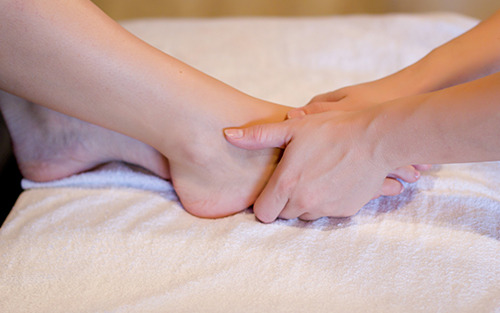
Finding ways to channel or avoid your anxiety quickly can help you remain stable, productive, and more self-aware.
Ways to Treat Anxiety
In this article, you discovered information about what anxiety is, what causes it, and how you can find relief.
Identifying that you have a problem with anxiety is the first crucial step to understanding it and seeking the help and treatment you may require.
Ignoring the symptoms of anxiety can leave you depressed, dwelling on your thoughts, and creating challenges in your life.
*Disclaimer: No content on this publication, page, or site, regardless of date or topic, should ever be used as a substitute for direct medical advice from your primary care physician or other qualified clinicians.
Sources:
mayoclinic.org/diseases-conditions/anxiety/diagnosis-treatment/drc-20350967
my.clevelandclinic.org/health/diseases/9536-anxiety-disorders
adaa.org/tips
medlineplus.gov/anxiety.html
Foot Palace Massage Spa Athens
196 Alps Rd Ste 31, Athens, GA 30606
(706) 521-5290
Foot Palace Massage Spa Braselton
2095 Highway 211 NW Suite 7B, Braselton, GA 30517
(678) 963-5958
For the original version of this article visit: https://yourfootpalace.com/anxiety-definition-causes-and-relief/
0 notes
Text
Why Do My Muscles Ache
Stop suffering and living in pain due to aching muscles. Knowing why your muscles ache will help you seek help before the muscle pain becomes crippling.
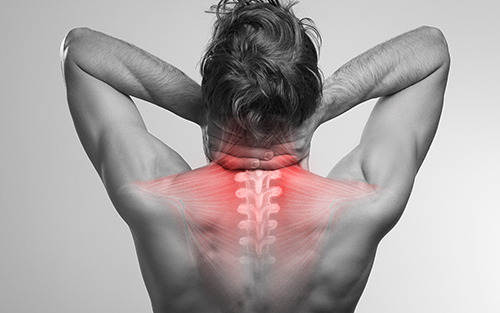
yourfootpalace.com gathered information on common reasons your muscles ache and how to make the pain and discomfort go away.
What is Muscle Pain
Muscle pain, or myalgia, is a sign, or result of an injury, infection, disease or other health problem. You may feel a deep, steady ache or random sharp pains. Some people can experience muscle pain all over, while others have it in specific areas. Everyone experiences and copes with muscle pain differently. Consider the following:
Back Pain (Dorsopathy)
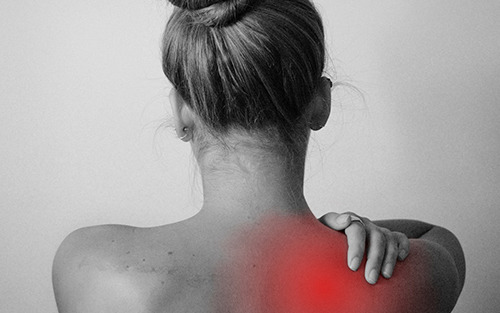
Back pain can range from a single muscle aching to a severe shooting, burning, or stabbing sensation. The pain may radiate down your leg or worsen with bending, twisting, lifting, standing, or walking.
Potential Causes – Back pain can have causes that are not due to any underlying or preexisting disease or condition. Examples include overuse like working out or lifting too much, prolonged sitting, sleeping in an uncomfortable or cramped position, or wearing a poorly fitting backpack.
Treatment – Nonsteroidal anti-inflammatory drugs (NSAIDs), like ibuprofen (Advil, Motrin IB, and others) or naproxen sodium (Aleve), can help relieve back pain. Take these over-the-counter medications only when directed or prescribed by your doctor. Overuse can cause serious side effects.
When to Seek Help – If your back pain lasts more than two weeks and keeps you from participating in normal, routine activities, see your primary care physician. If your pain is severe, you should see your doctor sooner. You should seek urgent/emergency medical care if you have a fever or chest pains associated with your back pain.
Prevention – Combine exercise (walking or swimming) with specific exercises to keep your back and abdomen core muscles strong and flexible. Strengthening your core muscles will help support your spine and can help prevent back pain. Proper lifting techniques, good posture, and frequent massages can also help prevent back pain.
Neck Pain (Cervicalgia)
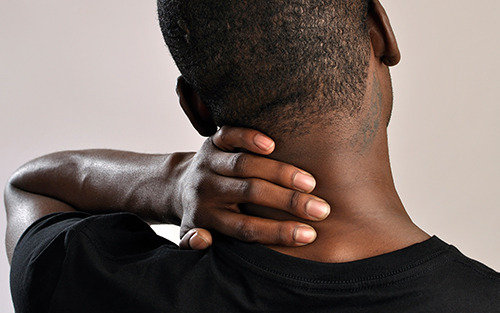
People often describe this as having a stiff neck. Cervicalgia is any localized neck pain not radiating to other parts of the body. This is a common condition, as about two-thirds of all people will experience neck pain at some point in their lives.
Potential Causes – Common causes may include osteoarthritis, spinal stenosis, a herniated disc, a pinched nerve, mental and physical stress and strain, poor posture, tumors, poor sleeping position, and other health conditions.
Treatment – Alternating an ice pack with a heating pad several times for 30 minutes, gentle stretching, and massage can help relieve neck pain. Taking an over-the-counter pain medication like ibuprofen, acetaminophen, or naproxen may also help.
When to Seek Help – Seek immediate/emergency medical care if your neck pain is accompanied by numbness or weakness in your arms or hands or if you have shooting pain in your shoulders or down your arms.
Prevention – Get up and move around every half-hour. Prolonged sitting has been linked to worsening neck pain. When using your phone, a headset, earbuds, or speakerphone are excellent options to keep your head in a neutral position. And when reading a book, hold it, so you don’t have to lean down or forward to read it.
Elbow Pain (lateral epicondylitis)
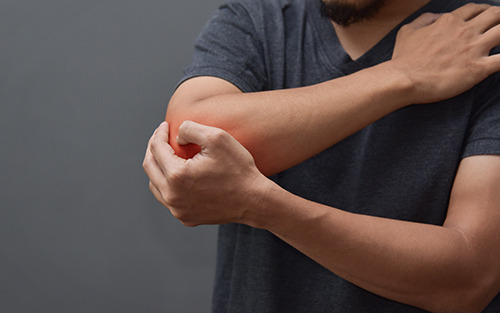
Often called tennis elbow, this is a painful condition occurring when tendons in your elbow are overloaded or overextended, usually from repetitive wrist and arm motions. Despite the name, athletes aren’t the only people who can develop tennis elbow.
Potential Causes – A common cause of elbow pain is the inflammation of one or both of the elbow’s tendons. This is called tendonitis, and it often results from overuse. Repetitive movements from work, household chores, golf, or tennis can affect the muscles above and below the elbow and cause tendonitis.
Treatment – Applying an ice pack several times for 15 minutes, rest, compression, elevation, and massage can help relieve neck pain. Taking an over-the-counter pain medication like ibuprofen, acetaminophen, or naproxen may also help.
When to Seek Help – Seek emergency care if you detect a deformity or protruding bone in your elbow, and immediately call your doctor if you experience severe pain, trouble moving your elbow, turning your arm from palm up to palm down and vice versa, and swelling or bruising around the joint.
Prevention – Warm up properly and gently stretch your arm muscles before any physical activities or playing a sport involving repetitive arm movements. Avoid putting extra strain on your tendons.
Foot Pain (Plantar fasciitis)

Plantar fasciitis (a common cause of heel and foot pain) is an inflammation of the fibrous tissue (plantar fascia) along the bottom of your foot, connecting your heel bone to your toes. This condition can cause intense, debilitating heel pain.
Potential Causes – Plantar fasciitis and foot pain, in general, can occur from arthritis, Injury, overuse, or conditions causing inflammation involving any of the bones, ligaments, or tendons in the foot.
Treatment – Rest your affected foot as much as possible, avoiding activities that worsen pain, and icing the affected area for up to 20 minutes multiple times daily may help relieve the pain. Taking an over-the-counter pain medication such as acetaminophen, ibuprofen, or naproxen may also help. Regular foot massages can also help accelerate your foot’s recovery.
When to Seek Help – Seek immediate medical care if you have an open wound or deformity, you experience severe pain or swelling, you can’t bear any weight on your foot, or it is showing signs of infection, like redness or fever.
Prevention – Most foot pain can be prevented by maintaining a healthy weight, avoiding high-heel shoes, wearing shoes that fit, getting regular foot massages and pedicures, and keeping yourself well-hydrated.
Preventing, treating, and relieving plantar fasciitis pain is possible, so follow the above info and end your discomfort and nagging pain.
Muscle Pain
In this article, you discovered essential information about common reasons you may experience muscle pain, how to treat it, and when to seek medical attention.
Knowing what to do when you have muscle pain will help you recover more quickly and return to your normal activities.
Ignoring your muscle pain can lead to severe injuries, immobility, and even hospitalization if left undiagnosed and untreated.
Disclaimer: No content on this publication, page, or site, regardless of date or topic, should ever be used as a substitute for direct medical advice from your primary care physician or other qualified clinician.
Sources:
my.clevelandclinic.org/health/symptoms/17669-muscle-pain
mayoclinic.org/diseases-conditions/back-pain/symptoms-causes/syc-20369906
health.harvard.edu/pain/3-tips-to-prevent-neck-pain
hopkinsmedicine.org/health/conditions-and-diseases/foot-pain-and-problems
Foot Palace Massage Spa Athens
196 Alps Rd Ste 31, Athens, GA 30606
(706) 521-5290
Foot Palace Massage Spa Braselton
2095 Highway 211 NW Suite 7B, Braselton, GA 30517
(678) 963-5958
To view the original version on Foot Palace, visit: https://yourfootpalace.com/why-do-my-muscles-ache/
0 notes
Text
Benefits of Massage Therapy
Keep stress, inactivity, and low energy from stealing your health and wellbeing. Knowing how regular massages can benefit your wellness will help you live a better, healthier, and happier life.

yourfootpalace.com gathered information on the benefits of massage therapy and how it can change your life for the better.
What is Massage Therapy?
Massage therapy is defined as muscle and other soft tissue manipulation (as by stroking, kneading, rubbing, or applying pressure with one or both hands or an instrument) by a massage therapist for therapeutic purposes.
Massage Therapy in Medicine
Massage is typically considered part of integrative medicine. Nationwide, medical centers are offering it more frequently as a supplemental treatment along with standard treatment. Massage therapy may be used for a wide range of medical conditions.
Massage Benefits
Massage therapy can benefit anyone’s health and wellness, but it can also help those with conditions like cancer, heart disease, stomach problems, and fibromyalgia. Those with a medical condition should talk to their therapist about it before your first massage session. Here are some of the benefits of massage therapy:
Massage Reduces Stress and Anxiety – The calm feeling you experience after a massage aids in significantly reducing stress and anxiety. Consider that the body has two nervous systems:
The sympathetic nervous system driving the “fight or flight” response in stressful situations
The parasympathetic nervous system focusing on routine operations that lead to rest and relaxation.
Massage therapy can increase the parasympathetic response, which decreases feelings of stress and anxiety.
Massage Lessens Fibromyalgia Symptoms – Using massage therapy over a five-week period can reduce the impact of fibromyalgia symptoms (a chronic illness causing muscle and joint pain and extreme fatigue).
Massage Relieves Pain – For those undergoing cancer (and other medical) treatments, the physical and emotional anxiety can be overwhelming. Regular massage therapy sessions are known to significantly increase relaxation and improve one’s quality of life.
Massage Reduces Muscle Tension and Pain – Massage helps lessen pain like:
Acute back pain
Neck pain
Headaches
Knee pain (knee osteoarthritis)
Hand arthritis
Sports injuries
Receiving a 60-minute massage multiple times per month will likely produce better results than fewer or more random massages.
Massage Can Improve Mental Health and Awareness – Massage therapy offers benefits for several mental health conditions, including:
Depression
Anxiety
Stress
Research also demonstrates that massage helps those with seasonal affective disorder (SAD) by improving one’s mood and significantly boosting energy levels.
Massage Therapy Can Strengthen Relationships – Whether it be friendship or the love of your life, a shared massage therapy experience can significantly deepen your relationship and sense of trust in each other.

Read more about the benefits of couples massages at yourfootpalace.com/everything-to-know-about-couples-massage/
Massage Relieves Tension Headaches – Massage decreases the frequency and severity of tension headaches. A single massage therapy session immediately affects perceived pain in those with chronic tension headaches.
Massage Therapy Can Help You Lose Weight – Deep tissue massage promotes lymphatic flow and circulation, which significantly contribute to detoxification and weight loss. Combined with a regular exercise regimen and a well-balanced diet, massage therapy can help reduce the body’s excess fat and weight.
Surprising Benefits of Massage Therapy
It is common knowledge (and no surprise) that a well-applied massage can help you relax. However, massage therapy also has the following surprising benefits:
Massage Can Relieve Constipation – For those dealing with chronic constipation or constipation resulting from surgery, an abdominal massage may help restore more regular bowel movements.
Massage Boosts Immunity – It has been found that massage therapy boosts white blood cell counts, which play a significant role in defending the body from disease.
Massage Improves Sleep Habits – Regular massage encourages restful sleep. It also helps those challenged when trying to comfortably rest. Massage also promotes relaxation and sleep in those undergoing medical treatments like chemotherapy or radiation therapy,
Massage Counteracts Postural Stress – For those who work sitting down or spend long periods in a sitting position, more advanced forms of postural stress can appear as pain or weakness in the lower back and glutes caused by long periods of sitting. Massage can efficiently counteract this stress caused by sitting.
Known Benefits of Massage Therapy
In this article, you discovered essential information about commonly known and surprising massage therapy benefits.
Scheduling regular massage therapy sessions can lead to a staggering reduction in your stress and anxiety, leaving you more prepared to cope with the stressors of day-to-day life, injuries, and medical conditions.
Ignoring the need for massage therapy can leave you stressed and anxious over trivial matters and potentially suffering from debilitating nerve and muscle pain.
Sources:
arthritis.org/health-wellness/treatment/complementary-therapies/natural-therapies/benefits-of-massage
mayoclinic.org/tests-procedures/massage-therapy/about/pac-20384595
health.clevelandclinic.org/benefits-of-massage/
betterhealth.vic.gov.au/health/conditionsandtreatments/massage
nuhs.edu/patients/health-information/articles/top-5-health-benefits-of-regular-massage-therapy/
Foot Palace Massage Spa Athens
196 Alps Rd Ste 31, Athens, GA 30606
(706) 521-5290
Foot Palace Massage Spa Braselton
2095 Highway 211 NW Suite 7B, Braselton, GA 30517
(678) 963-5958
The post Benefits of Massage Therapy appeared first on https://yourfootpalace.com.
0 notes
Text
Back Pain Relief
There are ways to avoid surrendering your mobility and happiness to debilitating back pain. Knowing how back pain occurs and how to alleviate it will help you live pain-free and prevent future occurrences.
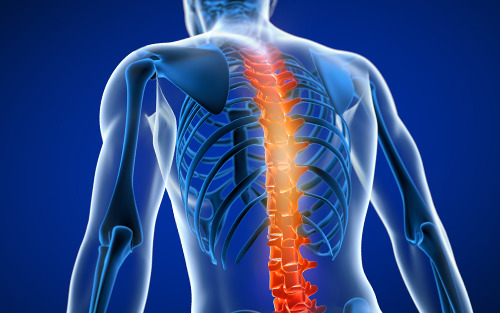
yourfootpalace.com gathered information on why we experience back pain and several ways to find relief, and how you can stop it from happening again.
Back Pain Causes
Back strains and sprains are the most typical causes of back pain. You can injure muscles, tendons, or ligaments when lifting something excessively heavy or not lifting an item in the correct manner. More sensitive people can even strain their back just by sneezing, coughing, twisting, or bending over. Other common causes of back pain include:
Arthritis
Osteoarthritis
Scoliosis
Lordosis
Osteomyelitis (discitis)
Bulging or ruptured disks
Poor posture habits
Nicotine consumption (cigarettes, vape, chew)
Cancer
Kidney failure
Kidney stones
Endometriosis
Fibromyalgia
Accidents
Pregnancy
Violent sports-related impacts
While these are all contributing causes to back pain, there are some signs that should alert you to the need to seek medical attention. These signs include:
Numbness, tingling, or weakness
Persisting pain after an accident
Pain is worse at certain times or in certain positions
Difficulties with your bowels or urination
Pain for more than seven days
The pain extends to other body parts
Unexplained weight loss
You’re running a fever

These signs may seem innocuous, but they may indicate a far more severe condition than a simple sprain.
Tip: Avoid self-medicating with any over-the-counter medications until consulting a physician. Primarily if you are already taking any prescription medications.
Recognize Different Types of Back Pain
Back pain may be acute (short-term) or chronic (long-term). Back pain can be a sudden, sharp, and debilitating pain or a dull, annoying, and constant ache.
Acute Back Pain – This pain lasts from a couple of days to a few weeks. It is typically caused by an accident, fall, or improper lifting. Acute back pain will usually get better on its own, without any type of treatment. However, there may be times when you should seek medical care.
Chronic Back Pain – This type of back pain lasts for more than 3 months and is much less common than acute back pain. Typically, chronic back pain can be successfully treated without surgery.
Ways to Relieve Back Pain
Depending on the source and severity of your back pain, there are a few remedies that may help ease the pain or discomfort until your back returns to normal. Consider the following:
Cold compresses or an ice pack
Physical activity
Limited bed rest
Acupuncture
Spinal Manipulation or adjustment (Chiropractor)
Exercise to strengthen your core muscles
Massage
Stretch
Yoga
Meditation
Sleep with a pillow under your knees
Increase your calcium and vitamin D consumption
Change your shoes (less than 1-inch heels)
Correct your standing and sitting posture
Halt all nicotine consumption (cigarettes, vape, chew)
Lose excess weight
Topical rubs and ointments
Surgery may be considered for people with structural abnormalities/defects, nerve compression, or spinal cord compression. However, surgery is usually reserved for those that haven’t responded to non-surgical treatments with medication and therapy.
Note: Once considered the “gold standard” of back pain treatment, bed rest has fallen out of favor. Doctors now realize that it’s better to keep moving so muscles don’t stiffen.
Preventing Back Pain
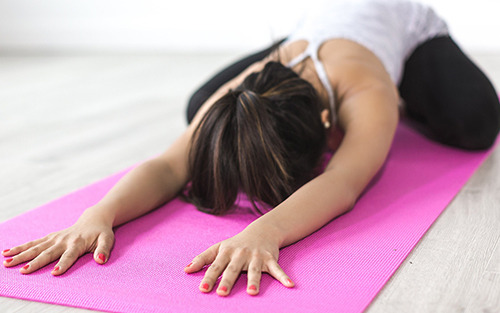
An intelligent approach to preventing back pain is to keep your back muscles flexible and strong. The following steps will help protect your back and prevent back pain:
Exercise and stretch at least 2 days a week
Practice proper posture by standing and sitting up straight
Avoid excessively heavy or awkward lifting. (When lifting from below waist level, bend your knees and keep your back straight). This makes your leg muscles do most of the work
Get active and eat healthily
Maintain a healthy weight. Being overweight can severely strain your back
Destress by participating in activities you enjoy
Tip: Pain and discomfort are ways that your body uses to communicate that something is not right. Masking any type of pain with over-the-counter medications or just ignoring it can exacerbate the principal cause.
Why Does My Back Hurt?
In this article, you discovered why back pain can occur, how to relieve it, when to seek medical attention, and what you can do to prevent it.
Addressing your back pain can help you relieve it, prevent the development of other, more severe health concerns, and maintain your pleasant disposition.
Ignoring or self-medicating back pain can allow it to mask more severe underlying conditions and potentially cause your debilitation or hospitalization.
Disclaimer: None of the content on this site, regardless of subject or date, should ever be used as a substitute for direct medical advice from your doctor or another qualified clinician.
Sources:
niams.nih.gov/health-topics/back-pain
health.harvard.edu/pain/home-remedies-for-low-back-pain
mayoclinic.org/diseases-conditions/back-pain/diagnosis-treatment/drc-20369911
my.clevelandclinic.org/health/diseases/7936-lower-back-pain
medlineplus.gov/backpain.html
health.gov/myhealthfinder/healthy-living/safety/prevent-back-pain
cdc.gov/acute-pain/low-back-pain/index.html
Foot Palace Massage Spa Athens
196 Alps Rd Ste 31, Athens, GA 30606
(706) 521-5290
Foot Palace Massage Spa Braselton
2095 Highway 211 NW Suite 7B, Braselton, GA 30517
(678) 963-5958
The post Back Pain Relief appeared first on https://yourfootpalace.com.
0 notes
Text
9 Suggestions on How To Relax
Prevent stress and anxiety from robbing you of your peace and tranquility. Knowing how to center yourself and relax benefits your health and wellness in immeasurable ways.
yourfootpalace.com gathered information on 9 ways you can quickly relax and regain your peaceful state of being.
1. Deep Breathing
By adjusting your breathing rate and pattern, you can stimulate the body’s parasympathetic nervous system, triggering a calming response, which decreases your heart rate, blood pressure, and muscle tension. Here’s how:
Sit comfortably or lie down
Inhale slowly through your nose until your stomach rises
Hold your breath and count to three
Exhale slowly, allowing your stomach to fall
Tip: There are many versions to this exercise. Experiment until you find one that works for you.
2. Practice Yoga
Regular yoga practice can foster mental clarity and calmness, increase body awareness, relieve chronic stress, center one’s attention, and sharpen concentration.
3. Spend Time Outdoors
You can find relaxing places all around. Just head to the beach, a park, the woods, a trail, or a quiet spot beside a stream. Most know how relaxing it is to be outside, but not everyone knows or recognizes nature’s healing effects.
4. Get a Massage
A massage therapist’s touch can elevate the body’s dopamine level, significantly affecting one’s inspiration, joy, and enthusiasm. Ultimately, the gentle pressure applied through massage stimulates the body’s circulation, helping you relax and rest.
Tip: Couple’s massages can help lessen mutual stressors and tension.
5. Spend Your Time Off – Off
Occupy your downtime from work with a movie, gardening activities, board games, weight lifting, sightseeing, or visiting a museum. By making time to pursue activities you enjoy, you give your mind a chance to deflect whatever makes you anxious.
6. Declutter
When you can’t find a place to store things, chances are you’ll leave them lying around so you can deal with them later. The more “stuff” you have, the more surfaces you have that collect dust and allergens. This alone can decrease the air quality in your home and creates a stressful situation when specific items or papers must be quickly located.
7. Eat Healthier
Consuming a healthier diet can lead to significant health and wellness improvements. Among the benefits of a more nutritious diet is an increased ability to resolve issues and avoid undue stress. Consider the following benefits of eating healthier:
Lowers risk of heart disease, type 2 diabetes, obesity, and some cancers
Helps the digestive system maintain proper function
Helps achieve and maintain a healthy weight
Increases skin, teeth, and eye health
Supports muscle growth, strengthening, and repair
Boosts immunity
Strengthens bones
May help you live longer
Tip: Consult your primary care physician and a nutritionist before attempting any radical or fad diets. Weight loss or weight gain should be closely monitored to prevent severe health problems.
8. Reduce Alcohol Consumption
Low and moderate doses of alcohol can increase one’s expression, happiness, and euphoria. However, over time, excessive alcohol consumption can result in the development of chronic diseases and other issues, including:
Digestive problems
Liver Disease
Stroke
Heart Disease
Hypertension
Stress
Anxiety
Note: Elevated alcohol consumption can also significantly contribute to the development of breast, mouth, throat, esophagus, colon, and rectum cancers.
9. Stop Smoking
While smoking may seem to temporarily relax or de-stress one’s state of being, the reality and long-term effects of tobacco consumption are substantially different. According to the Centers for Disease Control and Prevention, smoking causes or significantly contributes to:
Hypertension
Cancer
Heart Disease
Heart Failure
Stroke
Lung Diseases
Kidney Failure
Diabetes
Chronic Obstructive Pulmonary Disease (COPD)
Tip: Your body will begin to heal shortly after you quit smoking, and the sooner you give up the habit, the greater the benefit will be to your health and wellness.
Stress-Related Conditions
Allowing the stress of daily pressures or traumatic events to infiltrate your decisions and personal interactions can significantly contribute to the following conditions:
Hypertension
Heart Disease
Obesity
Depression
Anxiety
Gastrointestinal Disorders
Diabetes
Note: When you perceive danger or feel threatened, your body releases stress hormones, including adrenaline and cortisol, which prepare the body for emergency action. Subsequently, your heart rate increases, muscles tighten, blood pressure rises, breath quickens, and your senses sharpen.
How To Relax
In this article, you discovered nine easy ways to quickly get rid of stress and anxiety, leaving you on a path to better health and increased wellness.
Living a less stressful life can significantly improve your overall state of being while drastically reducing some of the contributing factors to severe health and emotional conditions.
Allowing stress to dominate your life and choices can lead to poor lifestlye decisions and debilitating conditions over time.
Sources:
hopkinsmedicine.org/health/wellness-and-prevention/9-benefits-of-yoga
cdc.gov/nutrition/resources-publications/benefits-of-healthy-eating.html
mayoclinic.org/healthy-lifestyle/nutrition-and-healthy-eating/in-depth/alcohol/art-20044551
cancer.org/healthy/stay-away-from-tobacco/health-risks-of-tobacco/health-risks-of-smoking-tobacco.html
Foot Palace Massage Spa Athens
196 Alps Rd Ste 31, Athens, GA 30606
(706) 521-5290
Foot Palace Massage Spa Braselton
2095 Highway 211 NW Suite 7B, Braselton, GA 30517
(678) 963-5958
The post 9 Suggestions on How To Relax appeared first on https://yourfootpalace.com.
0 notes
Text
Quick But Effective Tips for Managing Your Diabetes
Diabetes is a condition experienced by many Americans, and it’s also quite common here in Georgia. According to the Georgia Department of Public Health, more than 1 in 10 adults in our state have diabetes.
If you’re among these numbers, you might be looking for quick but effective tips to manage your diabetes without making any drastic lifestyle changes. In this case, you’re in luck — we discuss a few such tips below.
Everything in Moderation
Being diabetic doesn’t mean limiting yourself severely. Fat, protein, and carbs affect your blood sugar levels the most, but foods like bacon and chocolate can still be eaten in smaller portions. As highlighted by a 2016 piece from the University of Georgia titled Study Finds Exercise Can Help Enhance Diabetic Medication, you’ll need to move around more. You can start doing so gradually, like walking for an extra 5 minutes each day. Similarly, you can still have that bottle of beer or glass of wine — but no more than one or two glasses a day.
Tackle Stress
Long-term stress can affect your body in more ways than one. Stress is a known barrier to optimal insulin production in your body and can put you at a risk of higher blood sugar levels. On top of that, ScienceDaily confirms that heavy stress can shorten your lifespan. To combat this, find ways to incorporate relaxing activities into your life. Deep breathing is a great technique to start with. From here, find what works best for you. This can be yoga, a nice hot bath, a good book, or a scenic walk through parks like Ben Burton or Southeast Clarke.
Be Organized
You need to check your blood sugar levels 4-10 times a day to monitor it properly. If you have Type 1 diabetes, SymptomFind adds that you’ll need insulin therapy. However, the effectiveness of these methods in managing your blood sugar can be affected if you skip meals or insulin doses. This makes it vital for you to stay organized. Keeping a record of your blood sugar levels can help. You can also try taking insulin at the same time each day. If all else fails, the handy alarm app on your phone can help you keep track.
Get a Foot Massage
Diabetes can do more than just cause your blood sugar levels to spike. In our article Aging Feet Changes And Common Problems, we note that it can cause nerve damage and decrease the blood flow to your feet. If you get cuts or sores here, you won’t feel them — and lower blood flow means they’ll heal slower and are more vulnerable to infection. Our reflexology-based foot massages can help prevent these issues or mitigate their ongoing effects. What’s more, they’ll help relax you and eliminate some of that stress you shouldn’t be having.
Visit Your Doctor Regularly
Finally, it’s vital for you to stay on top of your condition through regular check-ups with your doctor. The CDC recommends that you do this at least twice a year — more often if you’re taking insulin therapy. These visits should give you the insight you need to tweak your lifestyle and manage your diabetes more effectively. You don’t need to waste time and money on in-person appointments, either. Local centers like the Athena Medical Clinic and Sharecare now offer convenient and accessible telehealth services for diabetic patients, making it even easier for you to make that appointment.
Diabetes can be a challenging condition. Fortunately, these quick and effective tips prove that you can still live your life to the fullest.
Image: Pexels
The post Quick But Effective Tips for Managing Your Diabetes appeared first on https://yourfootpalace.com.
0 notes